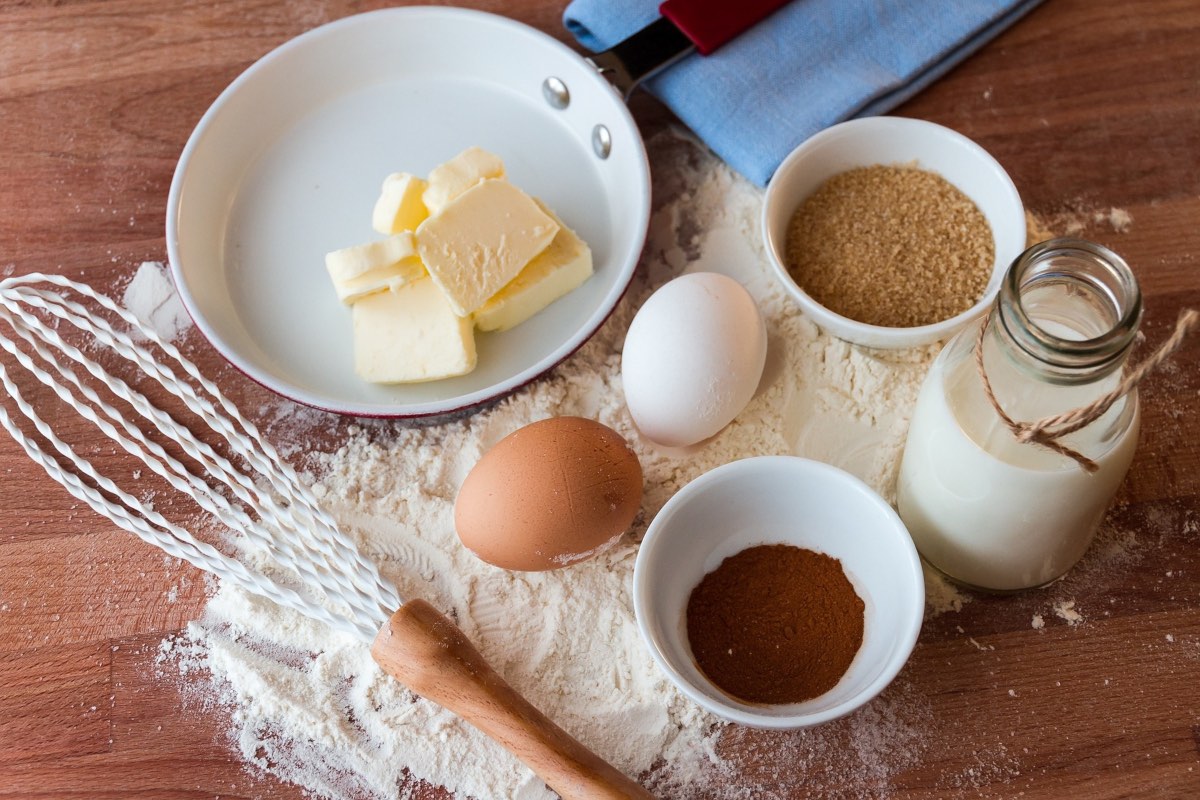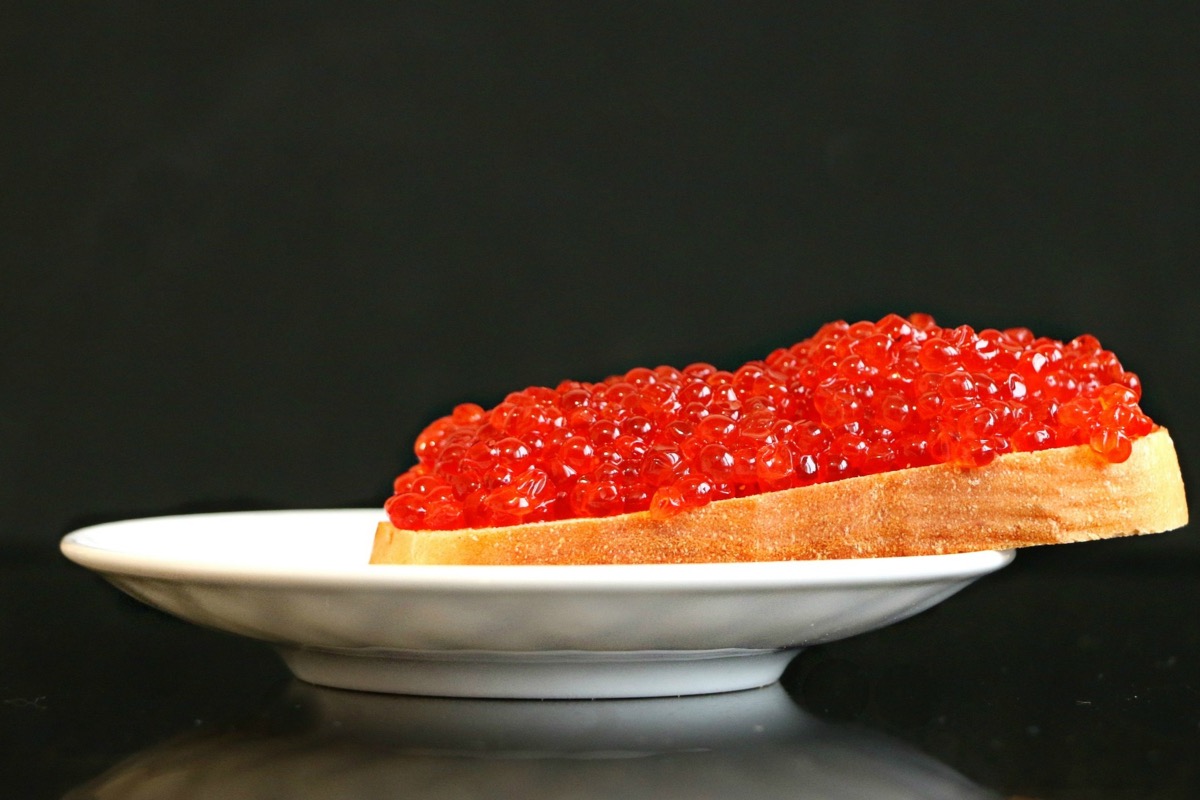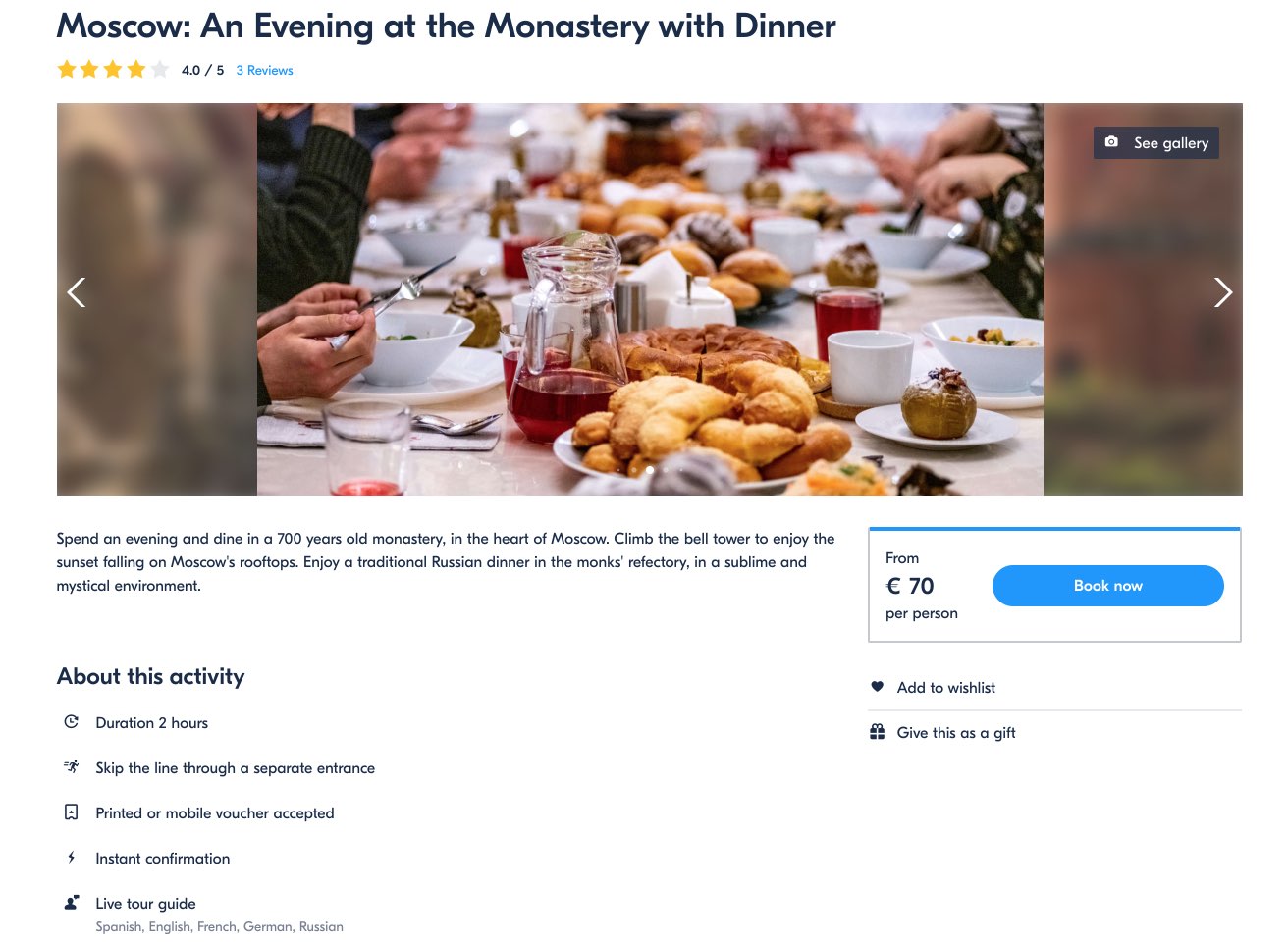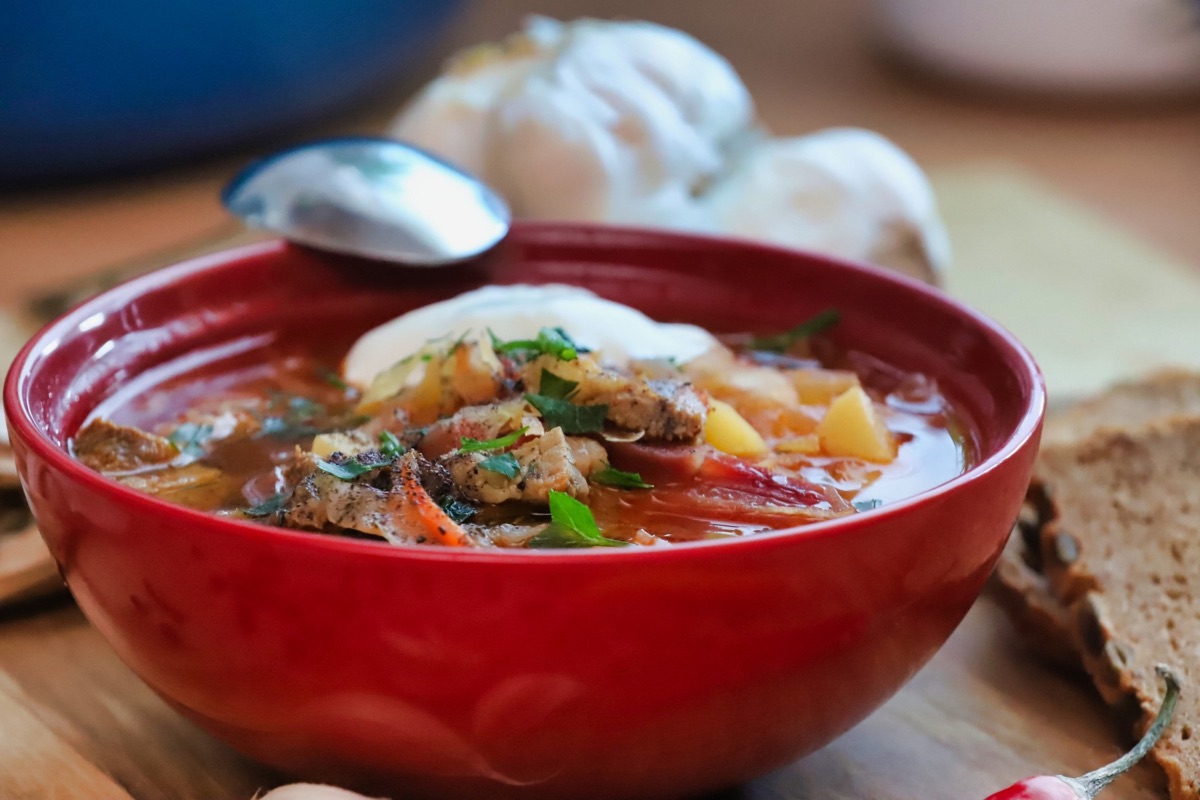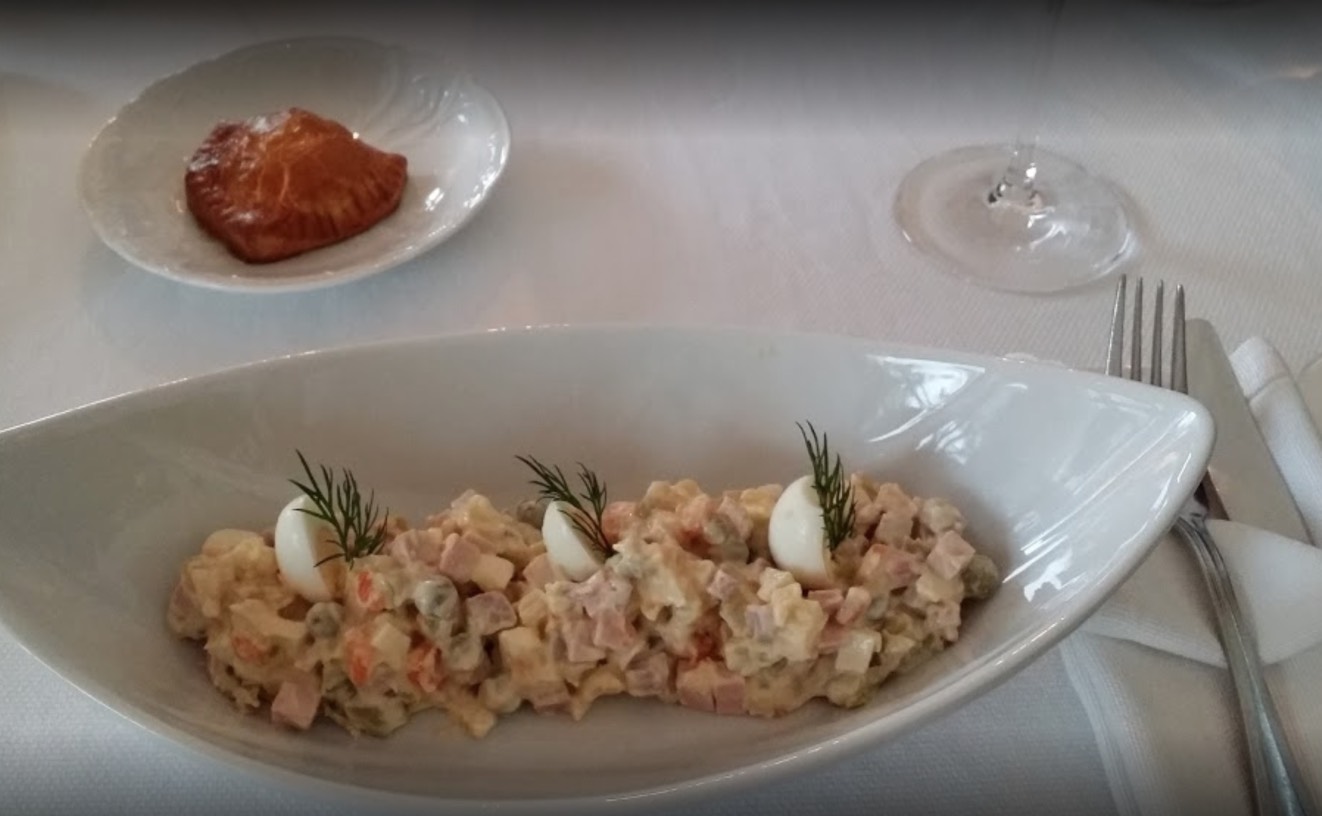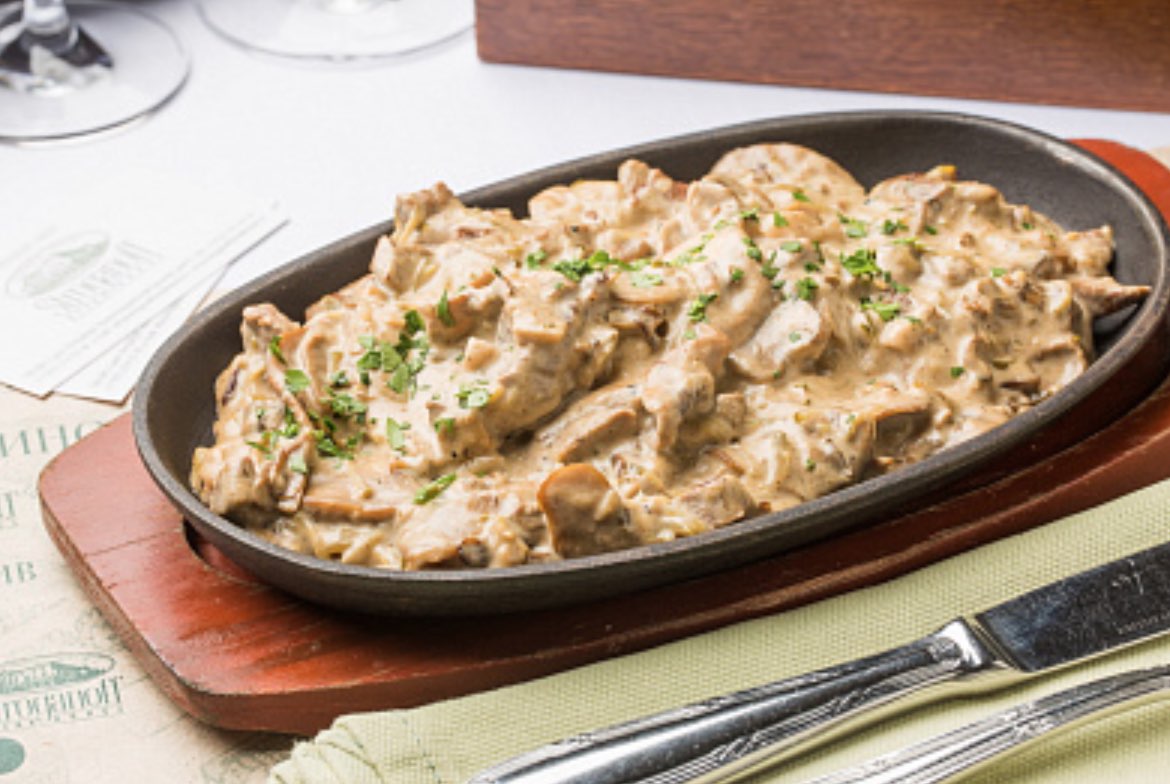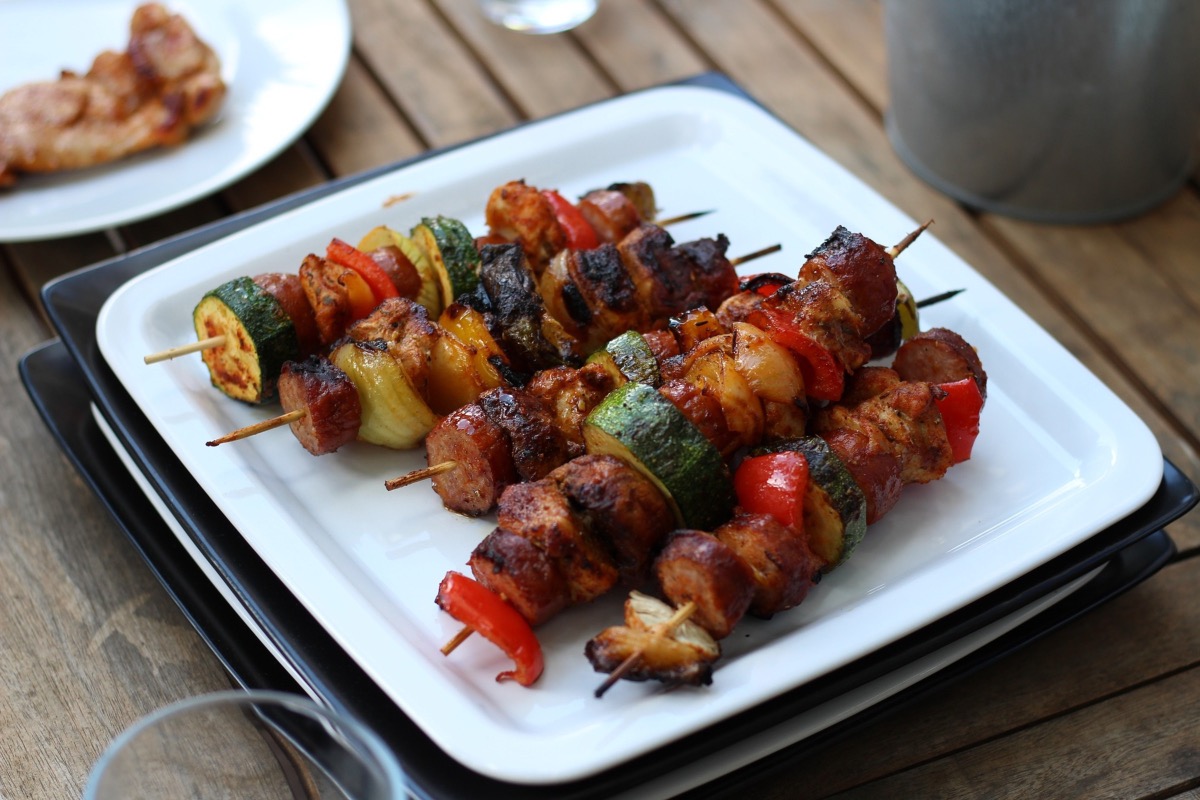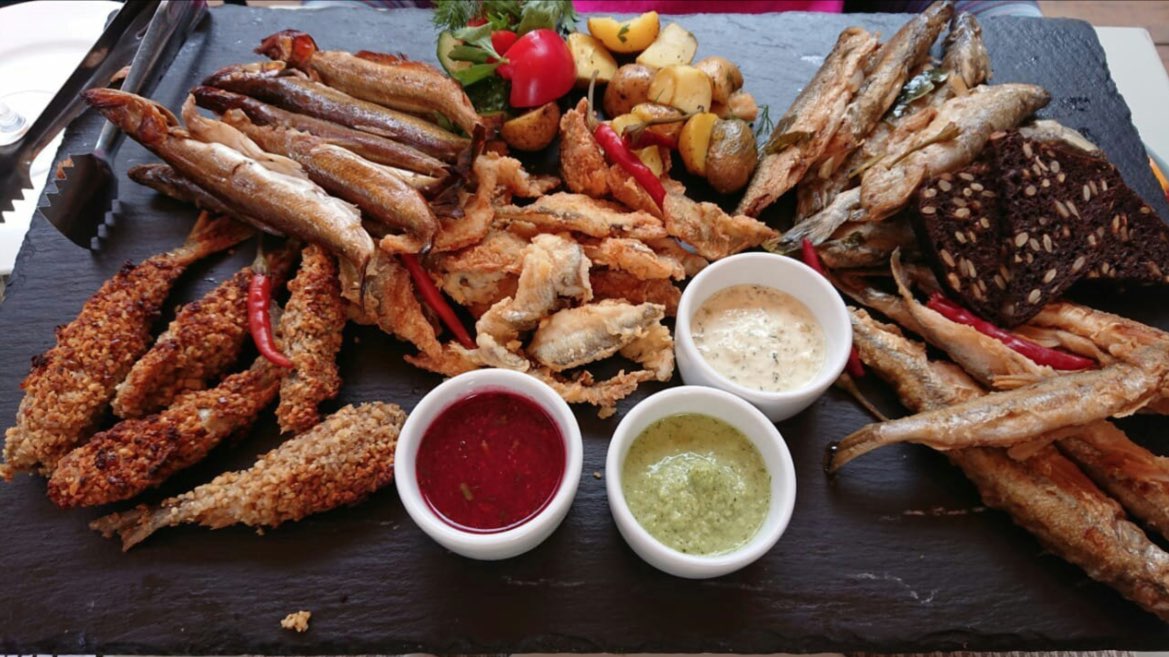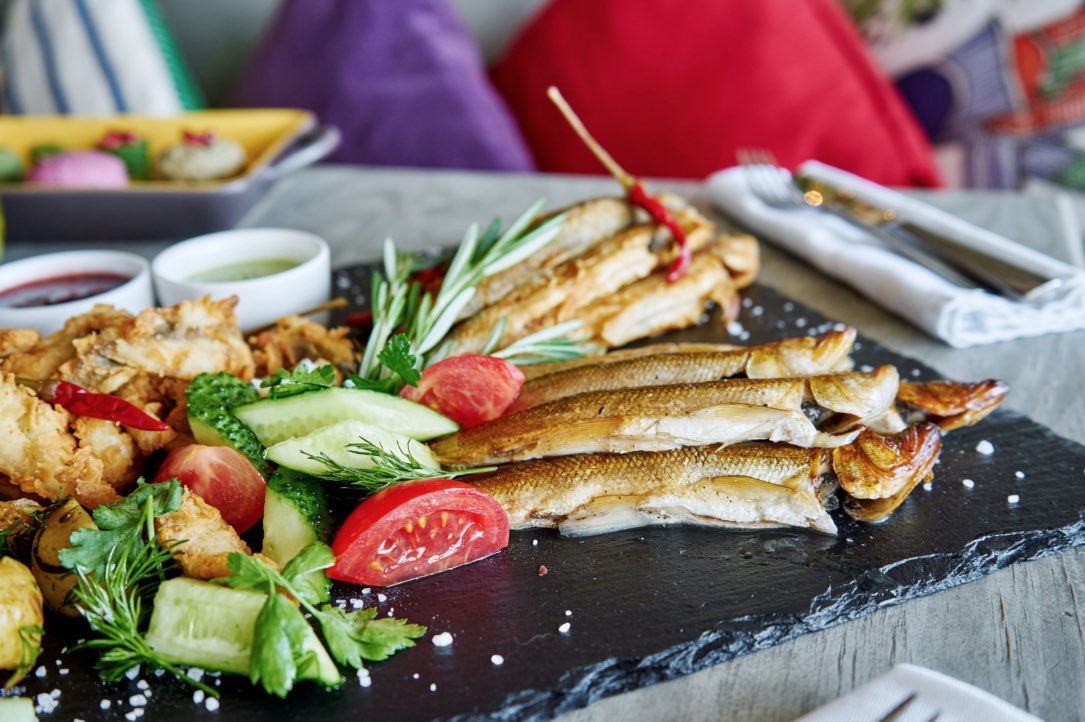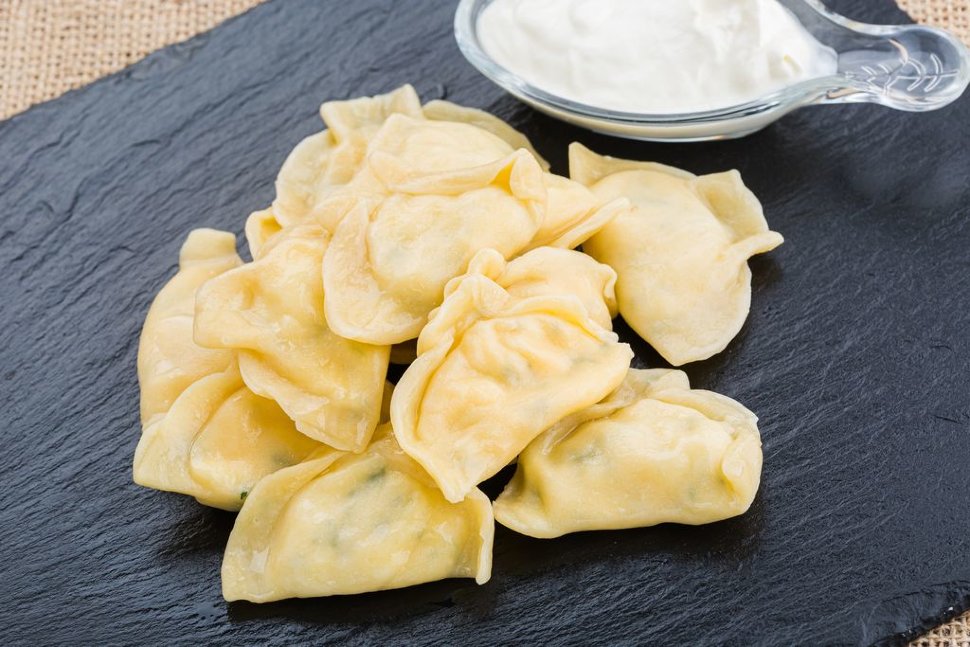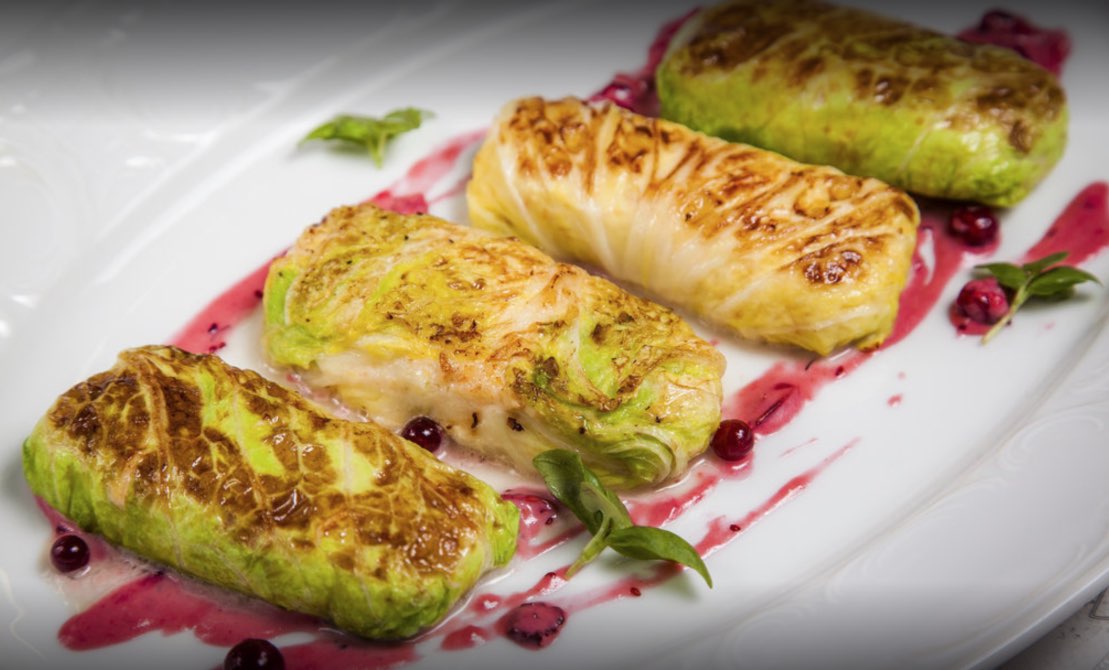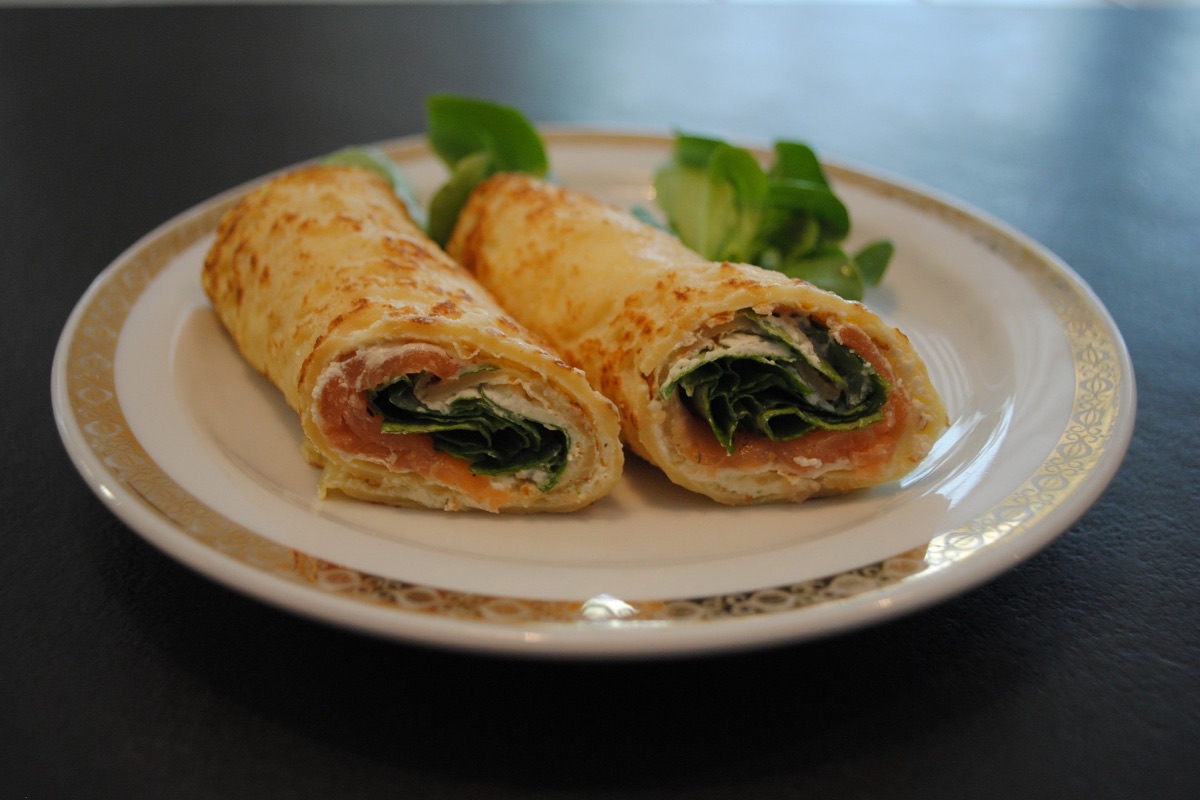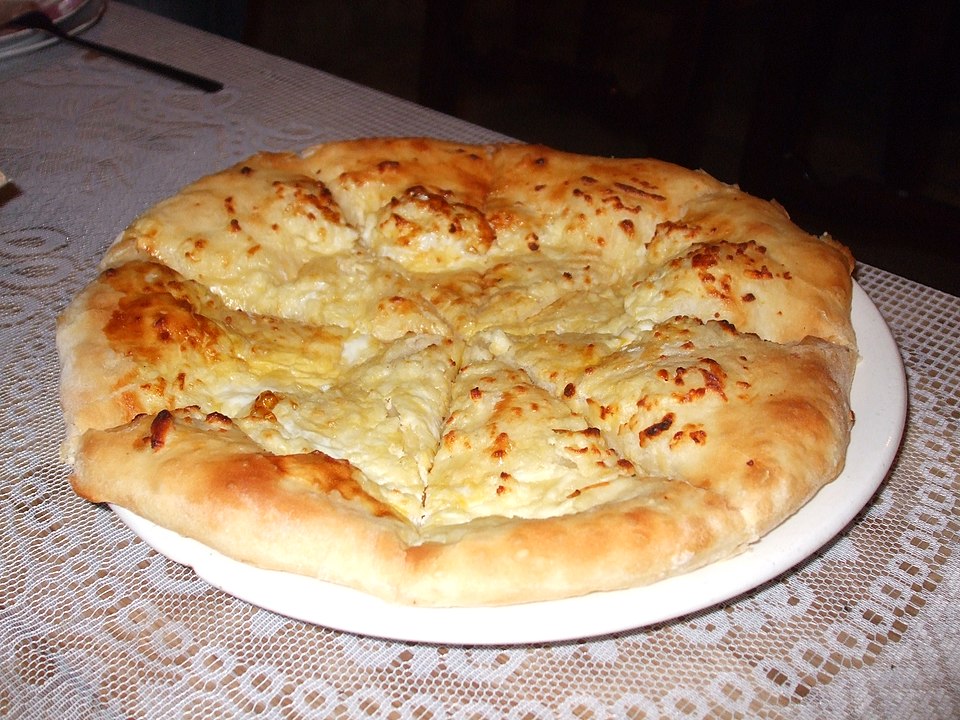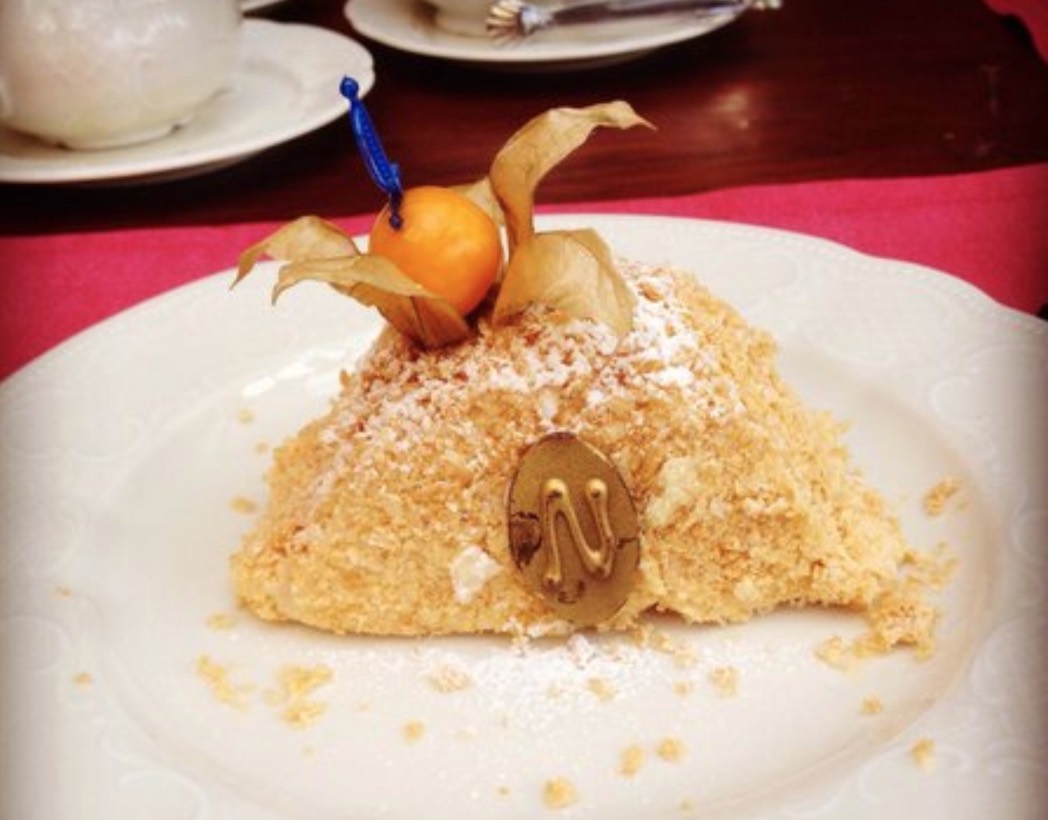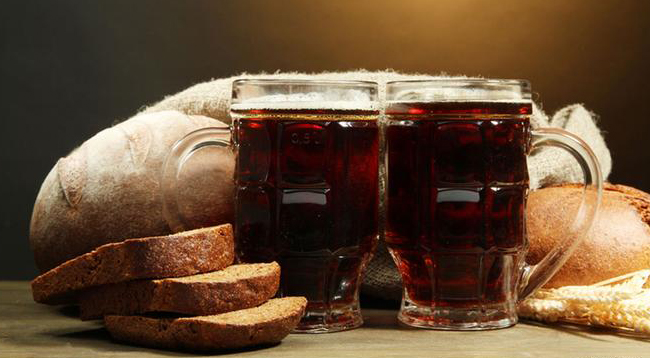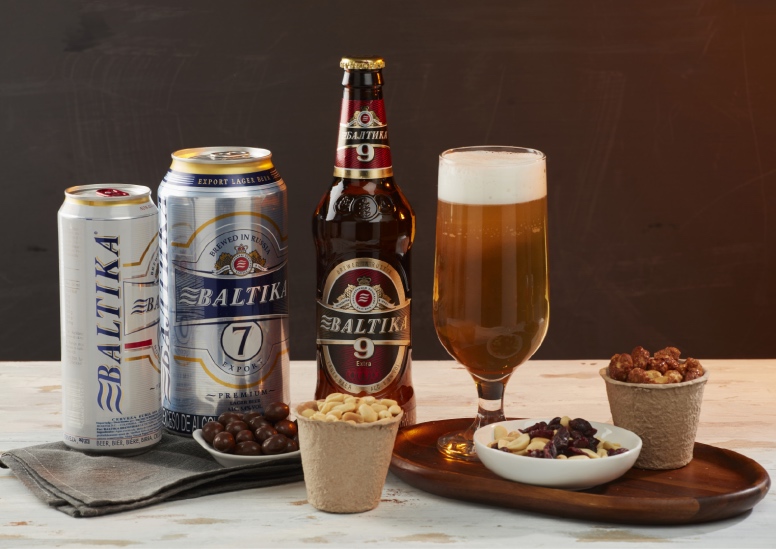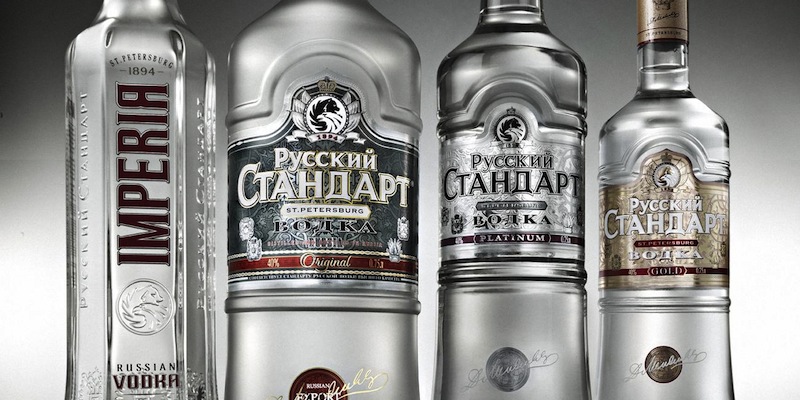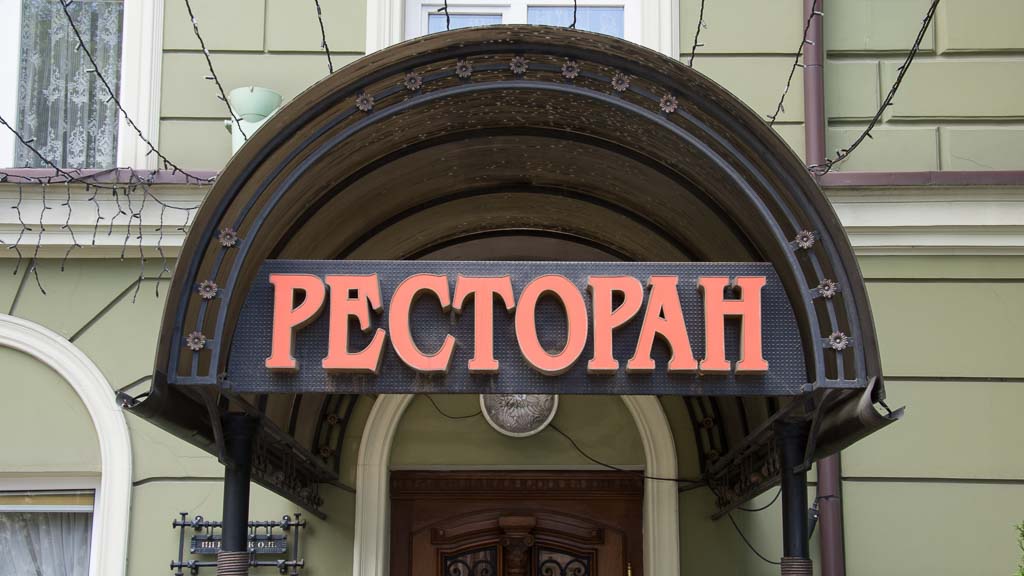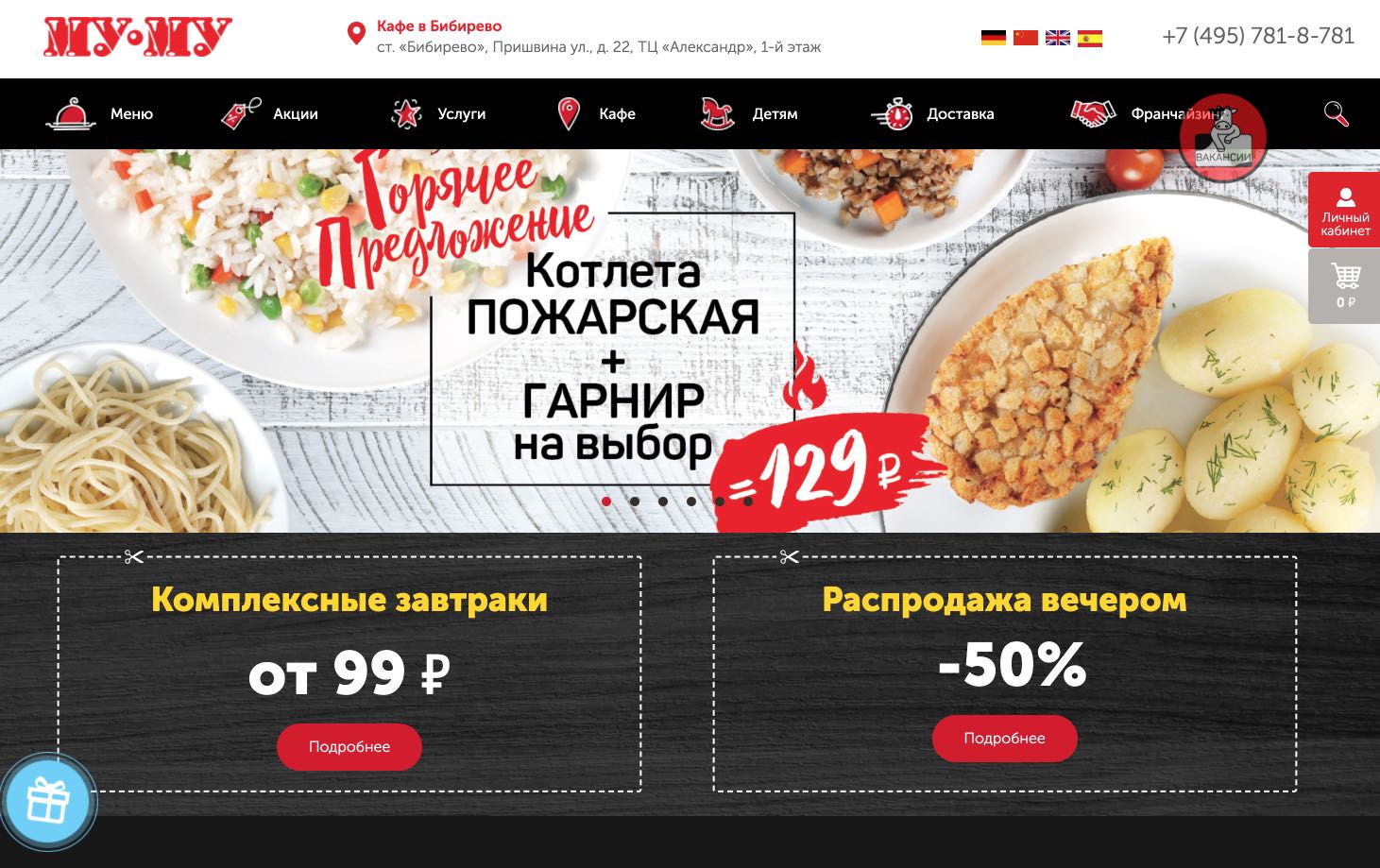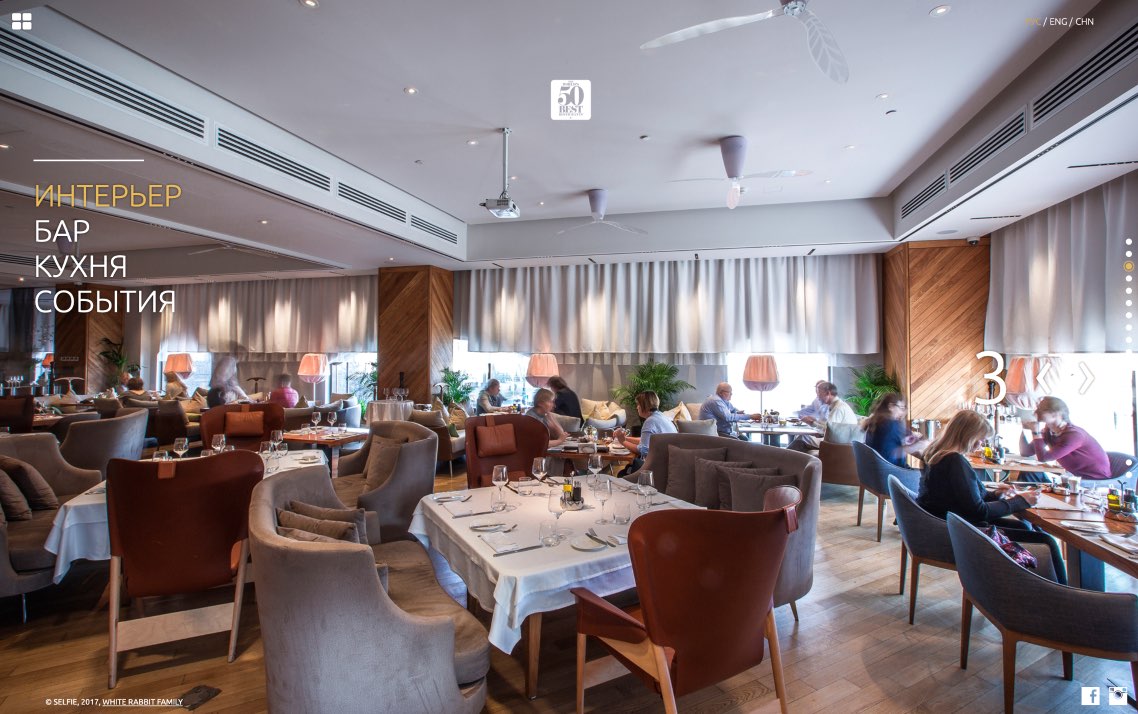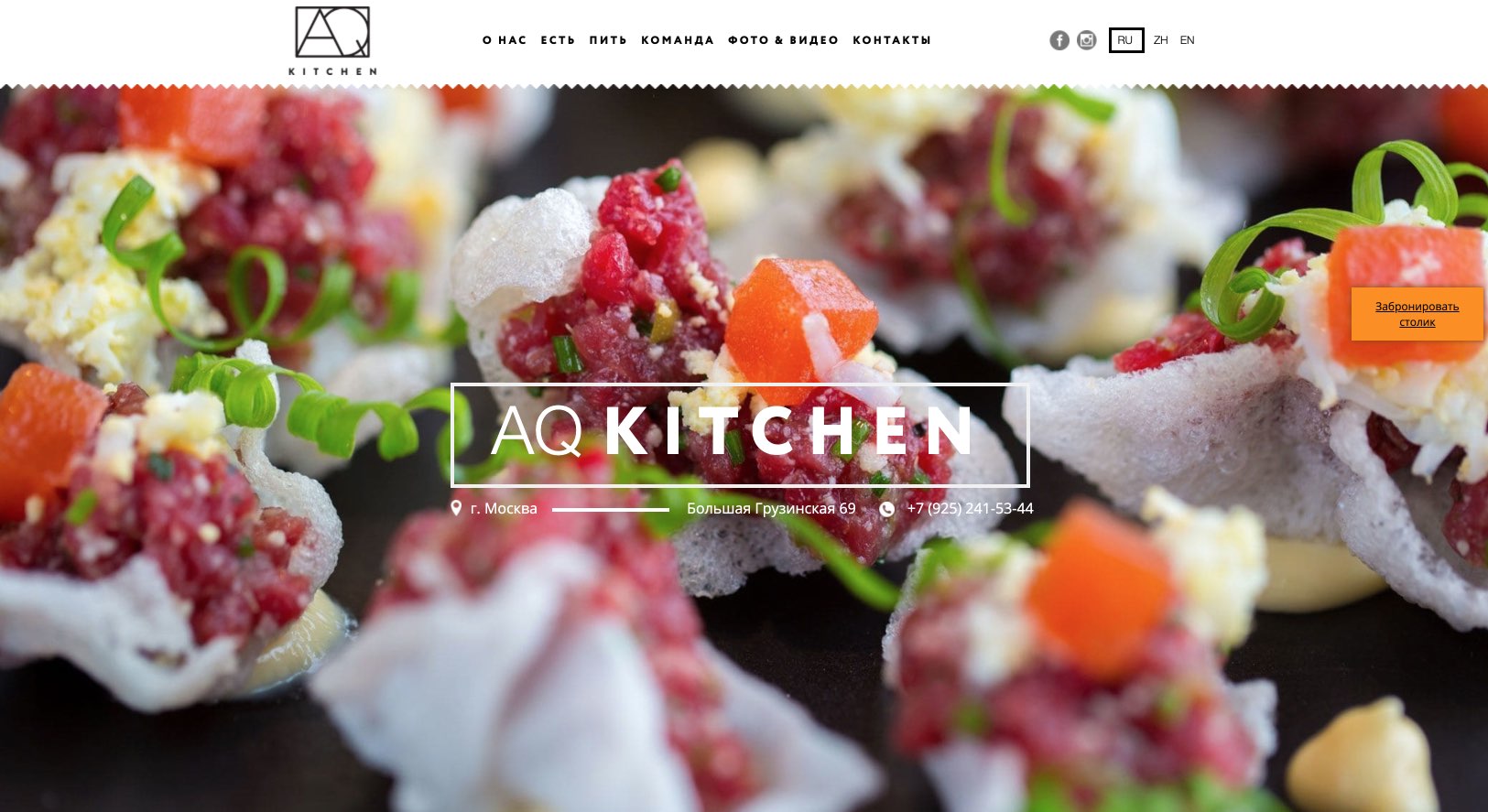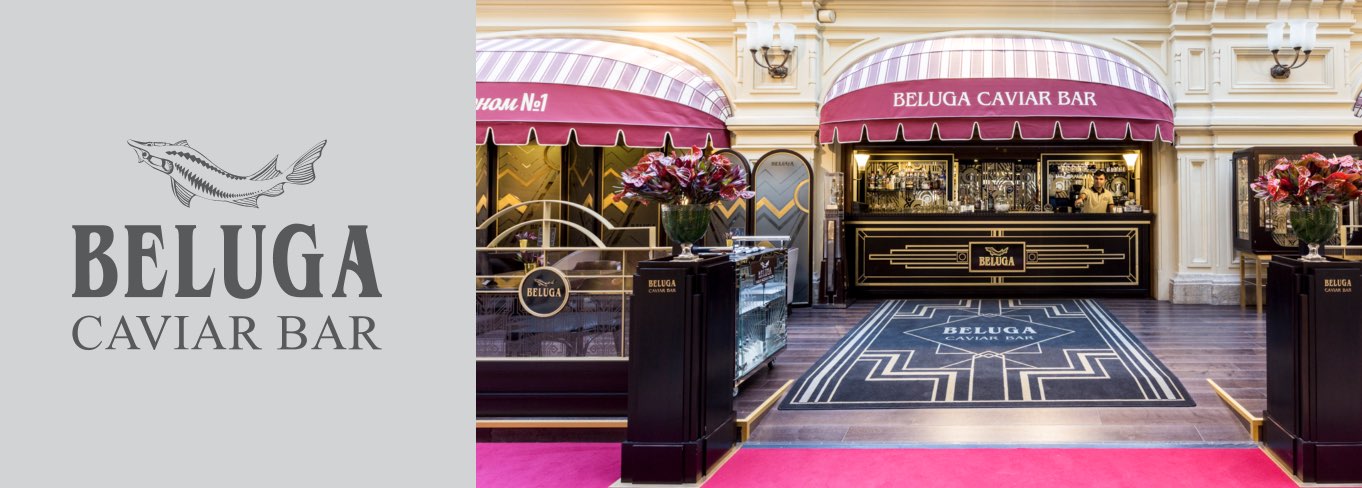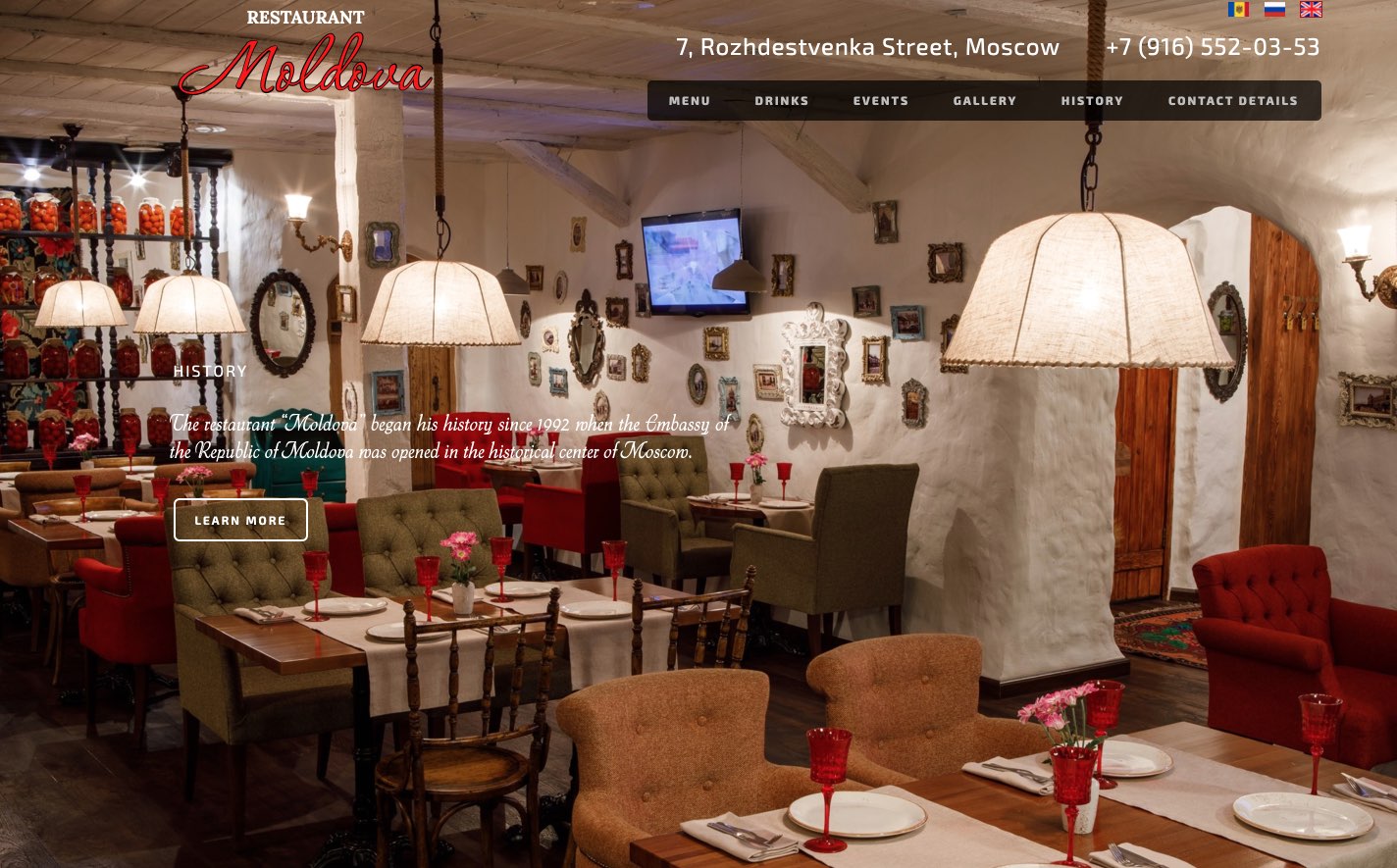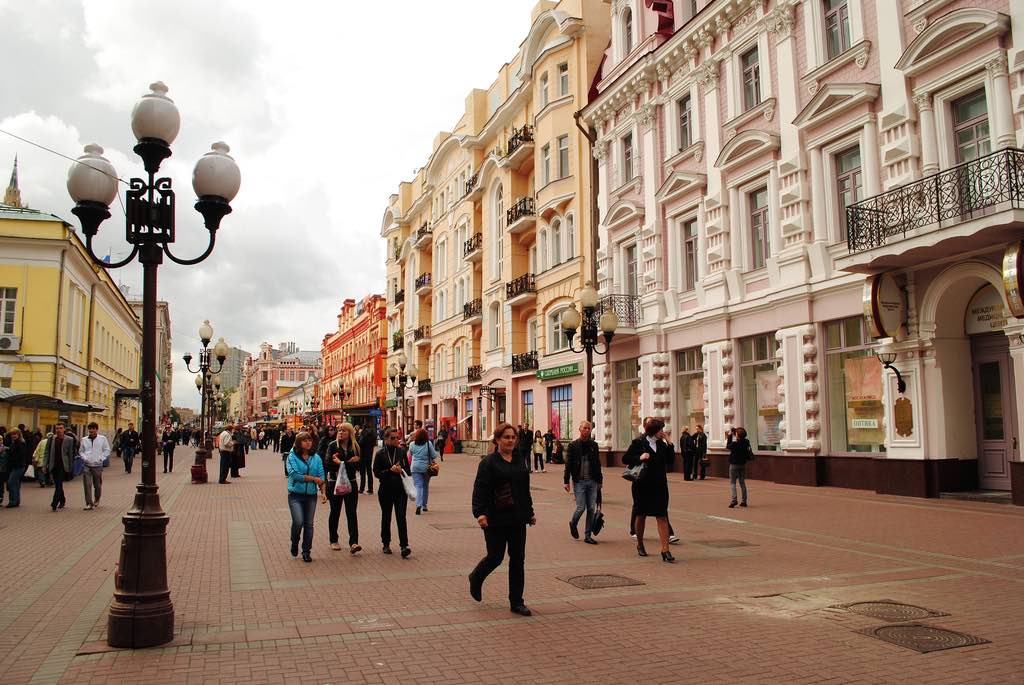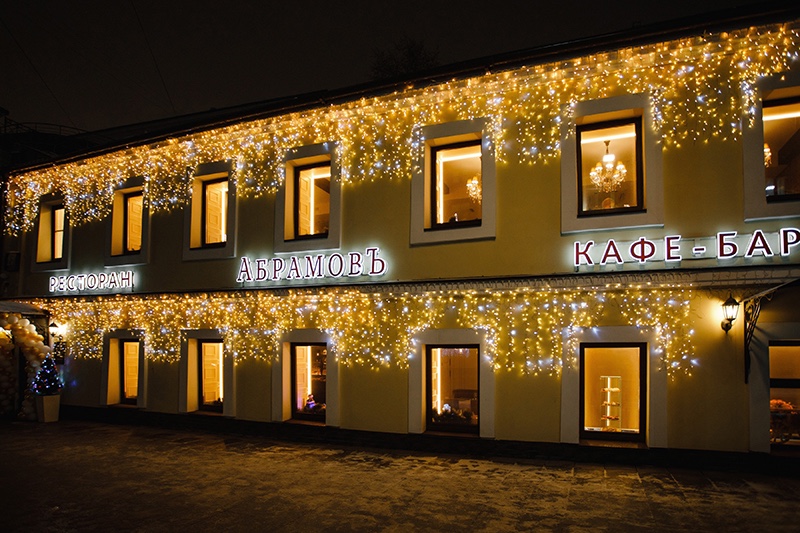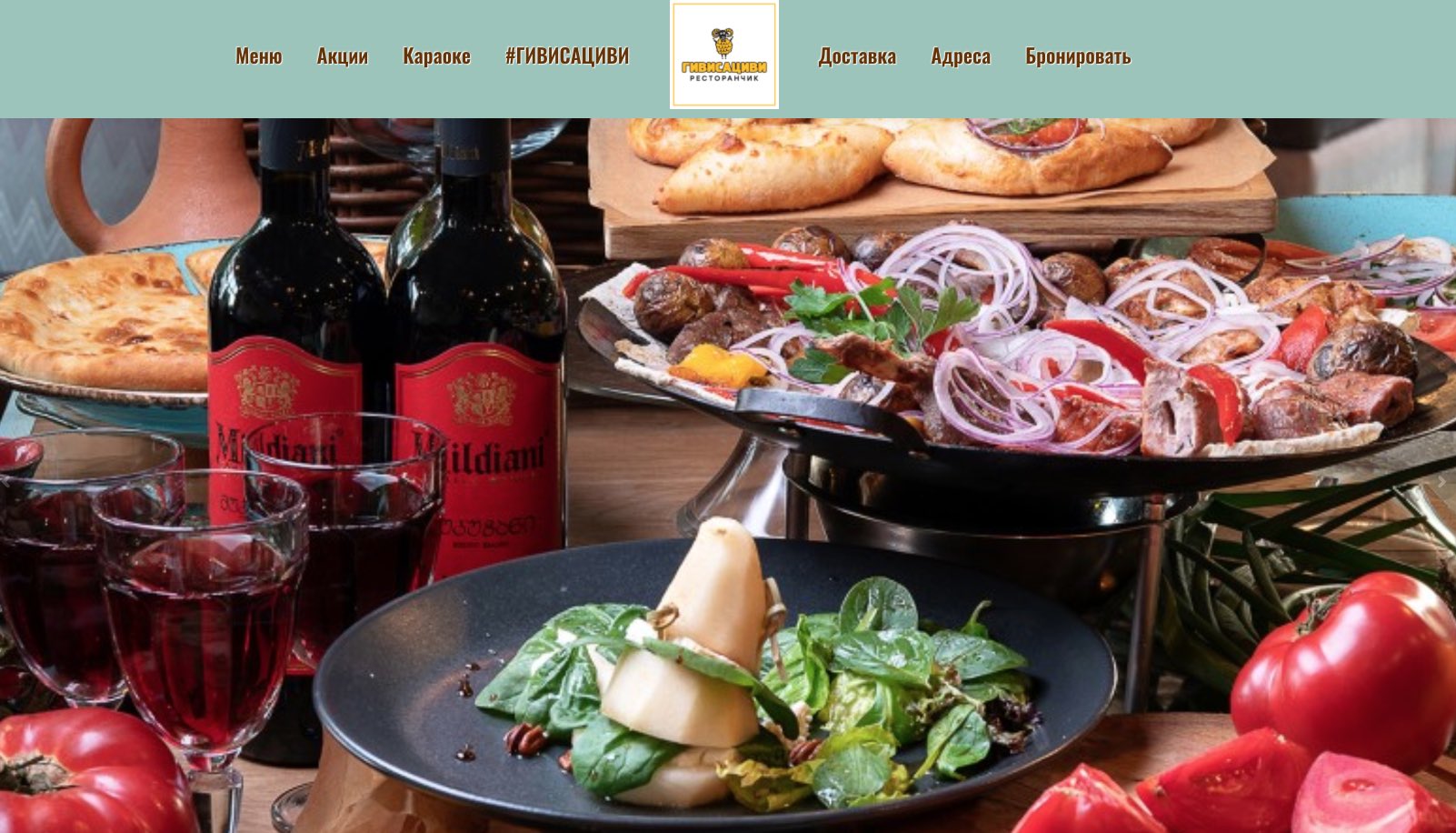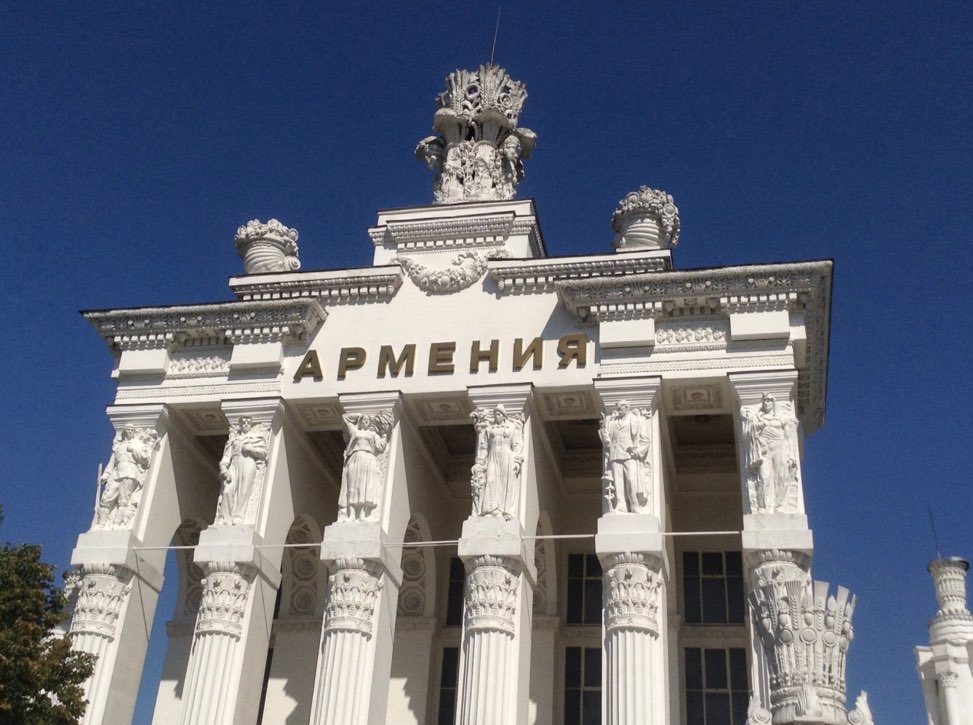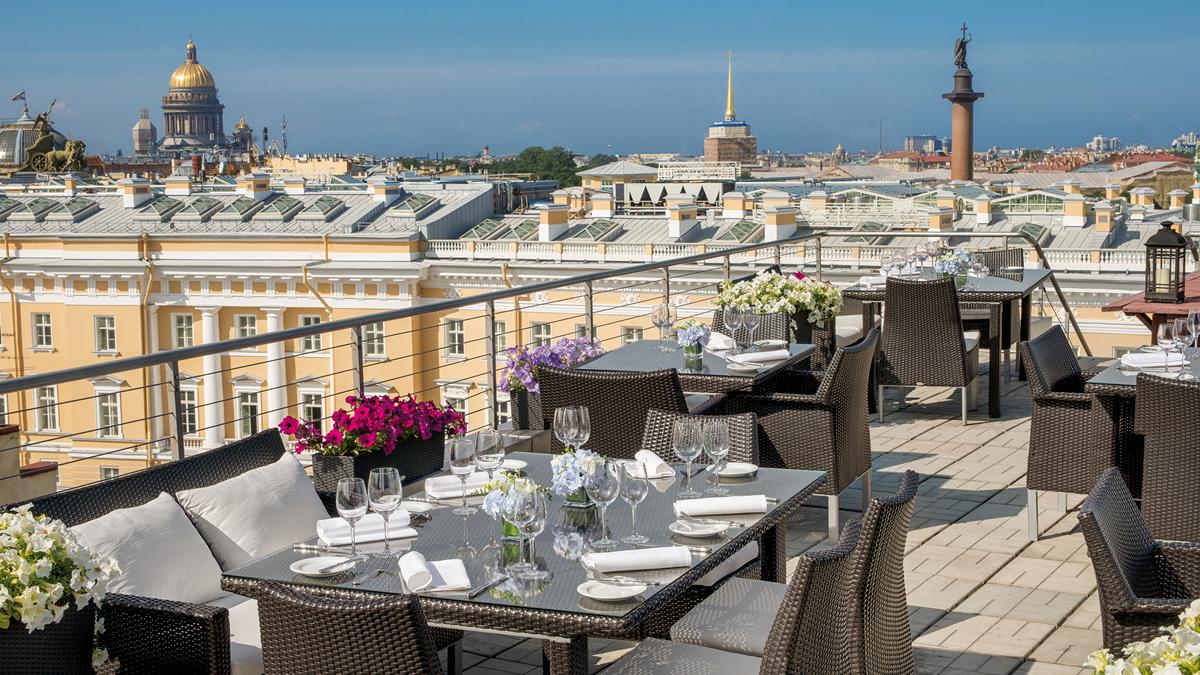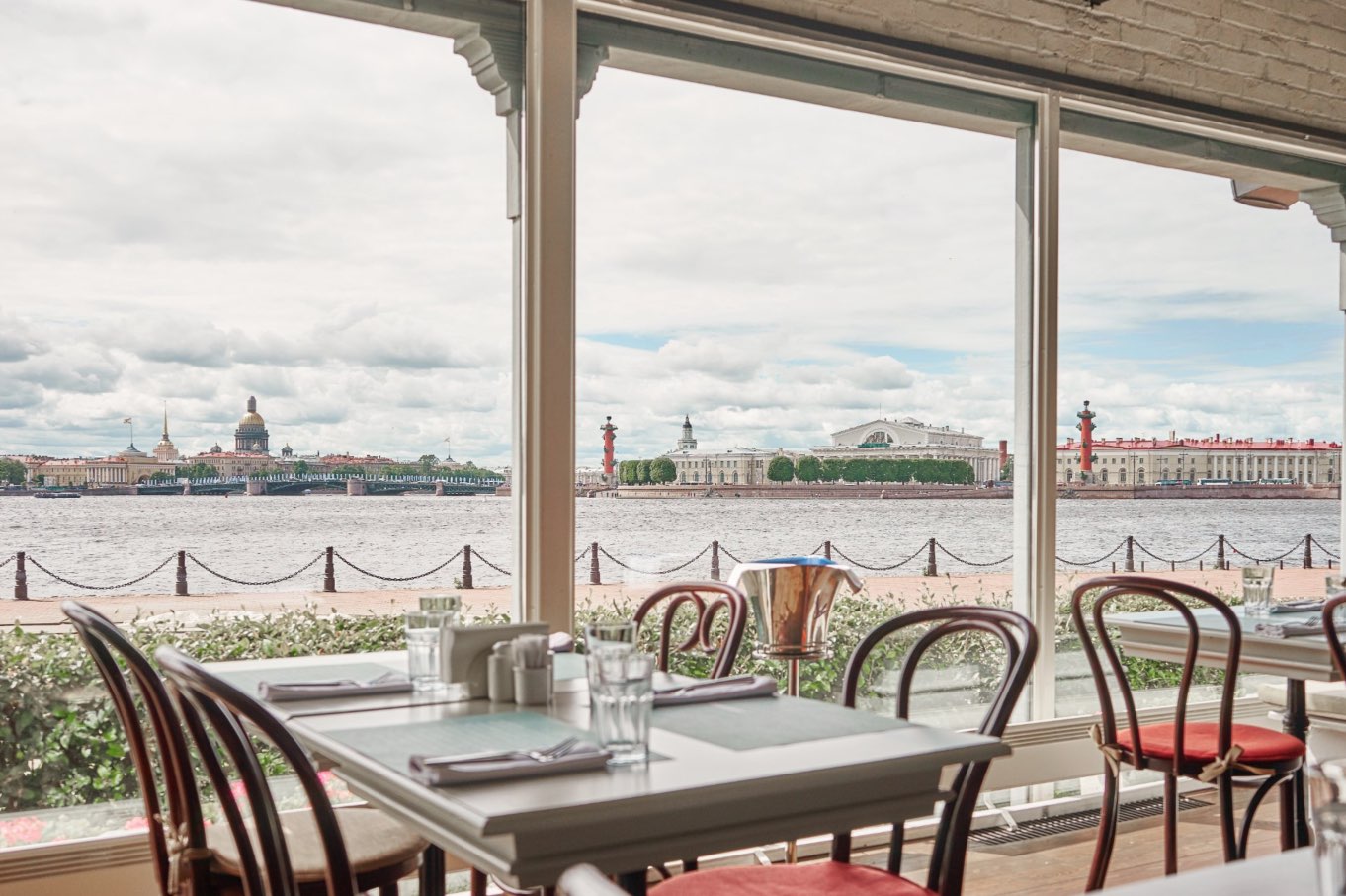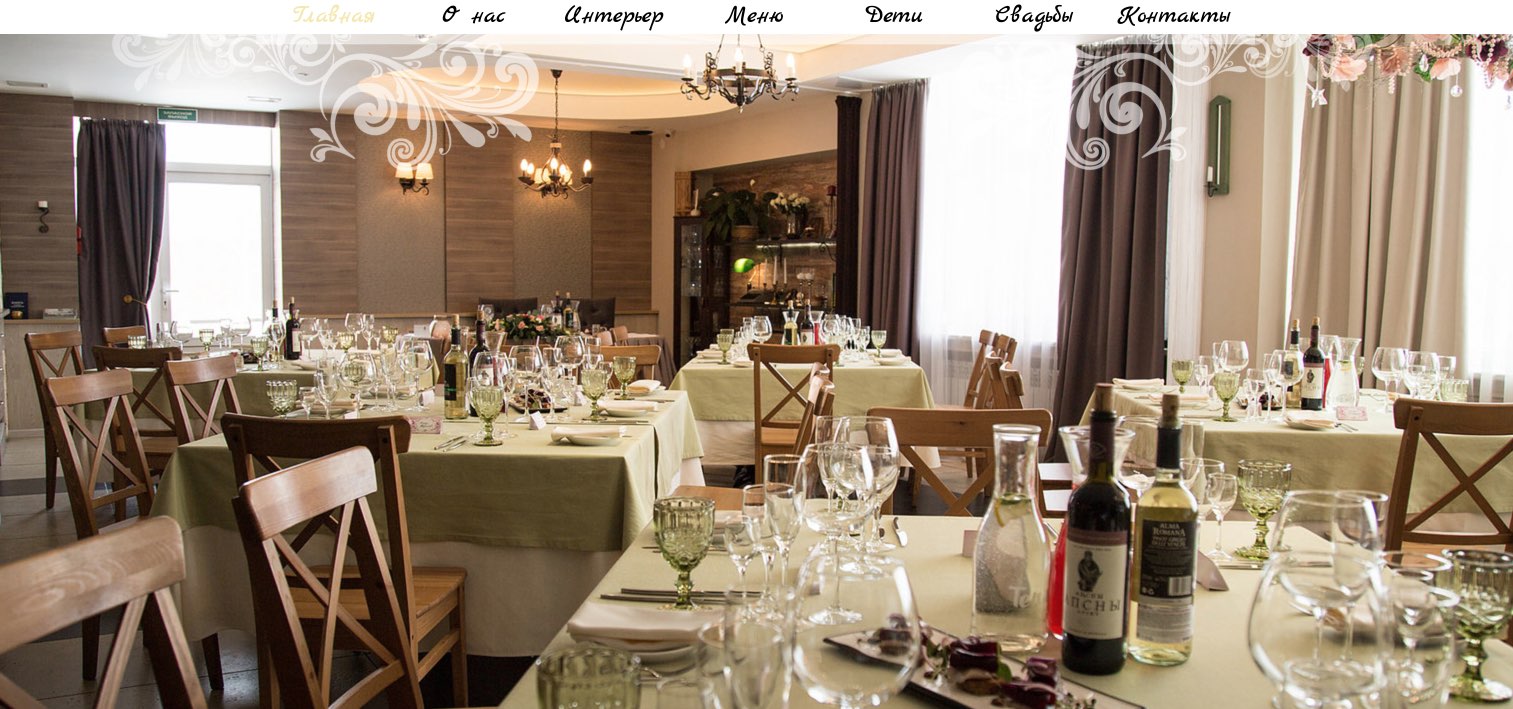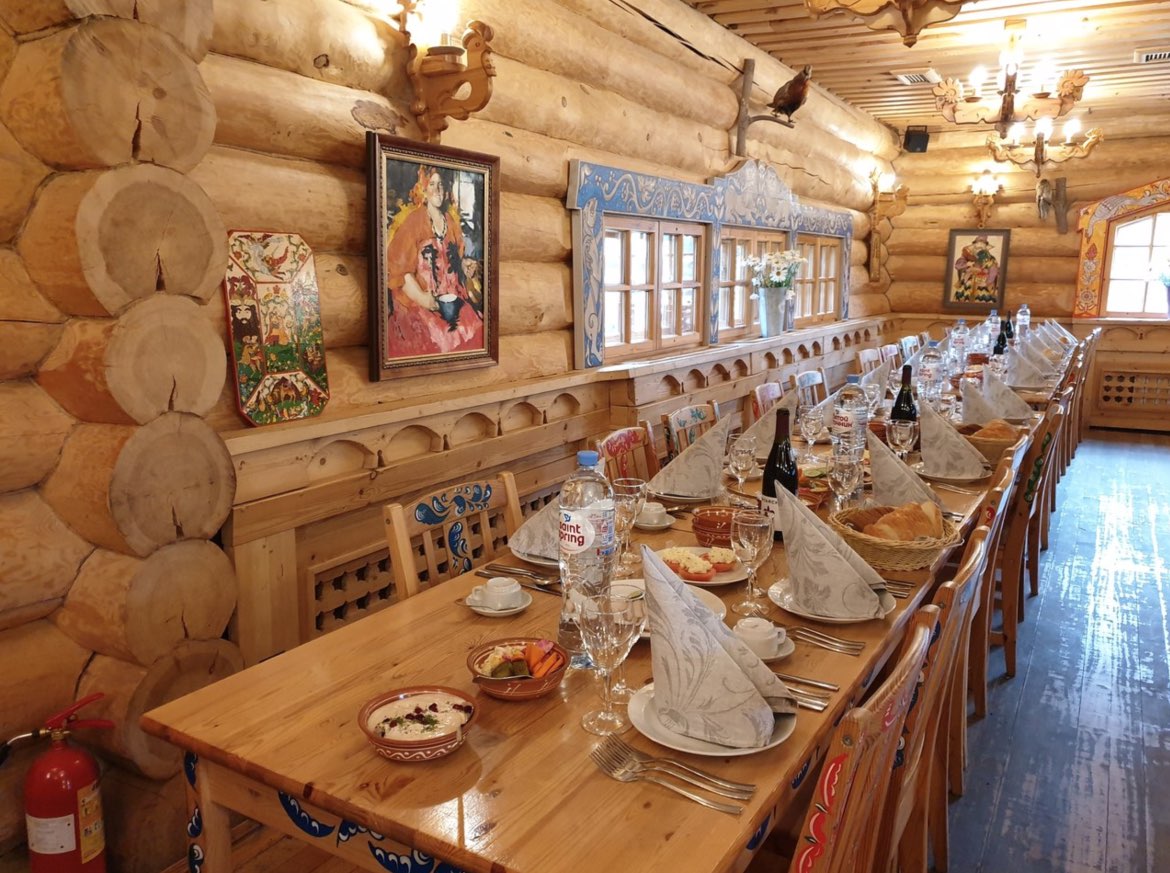Задание №8917.
Чтение. ЕГЭ по английскому
Прочитайте текст и запишите в поле ответа цифру 1, 2, 3 или 4, соответствующую выбранному Вами варианту ответа.
Показать текст. ⇓
The author speaks about her losing and gaining weight to show that
1) a lot of Americans need to go on a diet.
2) obesity is a serious problem in the USA.
3) American food is too fattening.
4) she has changed her opinion of American food.
Решение:
The author speaks about her losing and gaining weight to show that she has changed her opinion of American food.
Автор говорит о том, что она теряет и набирает вес, чтобы показать, что она изменила свое мнение об американской кухне.
«… but I merely wanted to use my scenario as an illustration for what I rediscovered about American food when I came home.»
Показать ответ
Источник: ФИПИ. Открытый банк тестовых заданий
Сообщить об ошибке
Тест с похожими заданиями
Not all foreigners can swallow herring under a fur coat or okroshka, but many Russians also find American food hard to swallow when in the U.S. Would you try deep-fried chewing gum or cucumbers pickled in an energy drink?
1. Cheez Whiz
In case you don’t know what this is, imagine processed cheese that sprays out of a can and you’re not far off. But the big question remains: Is there actually any cheese inside?
“This is an abuse of cheese,” said Aizhan Kazak. “This thing is telling you: Hello, I have a heart attack for you.”
Cheese or no cheese, this probably won’t be catching on in Russia anytime soon.
2. Potato salad
Homemade Potato Salad with fresh herbs.
Legion Media
Everyone blames Russian cuisine for weird salads drenched in mayonnaise, but America is also a culprit: They love slathering greens in the white stuff over the Atlantic. Take the U.S. equivalent of the Russian “mimosa” — the potato salad — for example.
“I have never understood that potato salad,” told Yulia Slutskaya. “The combination of potatoes, mayonnaise, and eggs is like a strike on the liver and a carbohydrate bomb. You’d be better off calling it ‘drown in mayonnaise’ salad.”
3. Meatloaf
This is not just a meat quiche. The dish was brought to the U.S. with German immigrants (in Bavaria, meatloaf is called “leberkäse”).
«It’s perfect with potato salad,» notes Yulia. «I think it’s really sickening. Actually, meatloaf looks like somebody ate it already and then returned it to the baking dish…”
4. Pancakes with maple syrup and bacon
Pancakes with maple syrup and bacon.
Legion Media
Pancakes with sweet syrup are fine, so too are pancakes with bacon. But why combine them? There are a lot of dishes that mix sweet and salty food, like caramelized bacon and donut burgers that many people just can’t get their head around.
5. Deep-fried butter
Deep-fried butter.
Legion Media
Americans fry anything, which surprises many Russians, from sausages to chewing gum — yes, chewing gum!
“It’s like fried butter in fried butter,” stated one Russian.
“My liver shrinks,” commented another user.
6. Peanut butter
Peanut butter sandwiches.
Legion Media
This is not very popular in Russia. Of course, you can find it in some Russian shops, but not everywhere.
“I really don’t understand how they can eat sandwiches with peanut butter,” wrote one Russian Internet user. “It’s impossible to eat this butter without bread, it’s high in calories, and to eat it with bread is the death of the pancreas!”
“It falls right to the bottom of the stomach and lies there for a long time,” commented another online user in Russia.
7. Koolickles
Koolickles.
Kimberly Vardeman / flickr.com
There are a lot of pickled vegetables in Russian cuisine, but there is something that really surprises Russian people. Cucumbers pickled in a sweet liquid, a kind of powder drink. Russians called it “cruel red cucumbers.”
“They are sweet like a compote!” – wrote a Russian man.
8. Pickled eggs
Homemade pickled eggs.
Legion Media
Another kind of weird picked food that Russians aren’t fond of is pickled eggs. Russians like to pickle food, but only with the intention to preserving it for winter — but eggs!
“The shape of pickled eggs is not appetizing, it seems like there are floating eyes somewhere among them, like in a horror movie,” wrote one Russian Internet user.
9. Sloppy Joe
Burgers are popular in Russia, but people complain about the aftermath when cooking them.
“10 dirty T-shirts from 10,” wrote a Russian housewife after she tried this recipe.
10. Fruit from the mall
America has many food malls, and Russians are always surprised by what’s on offer.
“At the organic food shop there were 25 kinds of apples, but only one of them smelled like apples. And I had to peel it. The other apples looked like a moulage,” complained another user on a popular Russian forum.
“Fruit in the U.S. is a pain. It is necessary to search all the shops and you may only find something edible once a month, or a season,” agreed another Russian. “This year I found real peaches that smelled and tasted of peach, not like those that you can hammer nails with. I bought 10 kg at once — and delicious cherries in the same place. I also bought them to make jam.”
If using any of Russia Beyond’s content, partly or in full, always provide an active hyperlink to the original material.
Вариант 1.
Раздел 1. Аудирование.
1. Before such tours you should learn how to move and breathe in rapid water.
2. This company ignores tourists’ safety.
3. Rafting can be life-threatening.
4. This kind of tour is for strong and fit people.
5. Professional staff make these difficult tours fun.
6. If you secure your life jacket properly, you’ll come home safely.
7. Team spirit and optimism are important in such tours.
-
Вы услышите диалог. Определите, какие из приведённых утверждений А–G соответствуют содержанию текста (1 – True), какие не соответствуют (2 – False) и о чём в тексте не сказано, то есть на основании текста нельзя дать ни положительного, ни отрицательного ответа (3 – Not stated). Занесите номер выбранного Вами варианта ответа в таблицу. Вы услышите запись дважды.
-
Mary’s mother is not interested in Robin Hood.
1) Тrue 2) False 3) Not stated
B) I A vintage inn is an average countryside pub.
1) Тrue 2) False 3) Not stated
C) Food prices in a vintage inn are rather high.
1) Тrue 2) False 3) Not stated
D) Vintage inns offer only traditional British cuisine.
1) Тrue 2) False 3) Not stated
E) Vintage inns are often close to local sights.
1) Тrue 2) False 3) Not stated
F) The level of service can vary in different vintage inns.
1) Тrue 2) False 3) Not stated
G) Mary has a map of vintage inns.
1) Тrue 2) False 3) Not stated
Утверждение
A
B
C
D
E
F
G
Соответствие диалогу
-
Вы услышите репортаж дважды. В заданиях 3-9 обведите цифру 1,2 или 3, соответствующую выбранному вами варианта ответа. Вы услышите запись дважды.
3. Viral marketing is used to promote
1) only chocolate, health products and football teams..
2) things that potential buyers need badly.
3) all types of goods, products and other things.
4. What is TRUE about Viral marketing and advertising?
1) It is inexpensive compared to traditional advertising.
2) It is always more successful than “hard sell” advertising.
3) It randomly contacts huge numbers of people.
5. What is NOT TRUE about Viral advertising and marketing?
1) It forces people to buy unnecessary things.
2) It only works on teenagers or people with hobbies.
3) It is the practice of placing messages on Internet sites.
6.It is called an epidemic when
1) huge numbers of people buy what they really need.
2) lots of people become internet friends.
3) huge numbers of people pass on a sales message.
7. Many believe that viral marketing is wrong because
1) it steals peoples secrets.
2) hired people pretend to be members of a chat group.
3) it puts innocent comments on the internet.
8. Astroturfing is about
1) sharing and discussing political opinions.
2) spontaneous “word of mouth” opinion sharing.
3) falsely creating public opinion.
9. The writer believes the best way to get an opinion is to
1) be cautious about astroturfing techniques.
2) hear it in real conversations.
3) avoid fake messages.
Раздел 2. Чтение
10.Установите соответствие между текстами A–G и заголовками 1–8. Занесите свои ответы в таблицу. Используйте каждую цифру только один раз. В задании один заголовок лишний.
1. Controversies and developments
2. Difficult to find the difference
3. Good for various spheres of life
4. Keeping viewers glued to a TV set
5. Unusual commercials
6 . Time is money
7 . Fairer chances for business
8. The appearance of TV advertising
-
For about seventy years TV has been used as a vehicle for advertising in some countries . Since the late 1940s, television commercials have become far and away the most effective and most popular method of selling products of all sorts. The radio advertising industry was well-established when television made its debut in the 1940s, and television was developed as a commercial medium, based upon the successful format of the radio.
-
In the earliest days of television, it was often difficult to understand whether you watch actual television programmes or commercials. Many of the earliest television shows were sponsored by single companies, who inserted their names and products into the shows as much as possible. For example, Texaco employees appeared during the show to perform while the Texaco musical logo would play in the background.
-
Another important milestone came in the 1960s with the introduction of very short commercial breaks during a TV show. Now it was possible for several companies to use a popular programme as an advertising platform together. It was one of the most efficient ways of marketing, and companies like Tide and Crest took it as an opportunity to expand their ad campaigns.
-
In the 1970s, the broadcast of television advertisements which promoted cigarettes was banned by the administration. This resulted in a conflict between the government and television networks, as for them these ads constituted a significant portion of the total revenue. The period between the 1970s and the 1990s was marked by the increase of the time of commercial breaks from 9 to 19 minutes or the debut of celebrities advertising brand products.
-
Today the vast majority of television commercials consist of brief advertising spots, ranging in length from a few seconds to several minutes. Commercials of this sort have been used to sell literally every product imaginable over the years, from household products to goods and services, to political campaigns. It is considered impossible for a politician to wage a successful election campaign without airing a good television commercial.
-
The brief commercial «breaks» that interrupt shows regularly are the primary reason for the existence of modern-day television networks. The programming is intended to capture the attention of the audience so that they will not want to change the channel; instead, they will (hopefully) watch the commercials while waiting for the next segment of the show. Entire industries exist that focus solely on the task of keeping the viewing audience interested enough to sit through commercials.
-
The TV commercial is generally considered the most effective mass-market advertising format, and this is reflected by the high prices TV networks charge for commercial aim during popular TV events. The ratings systems determine how successful television shows are, so that they can decide what rates to charge advertisers for their commercial airtime. For example, a single thirty-second TV spot in prime time may cost up to $2 million.
Текст
А
B
C
D
E
F
G
Заголовок
11. Прочитайте текст и заполните пропуски A–F частями предложений, обозначенными цифрами 1–7. Одна из частей в списке 1–7 — лишняя. Занесите цифры, обозначающие соответствующие части предложений, в таблицу.
People have always looked for adventure. Now, however, a new extreme sport seems to appear every week. What are the latest ways people have found to give themselves the ultimate thrill?
One way is horse boarding. All you need is a skateboard, a horse and two people. The rider of the horse makes the horse run and the person on the skateboard is pulled along. A ________ Well, it isn’t. First of all, a horse can go from standing still to fifty kilometres an hour very quickly, so the increase in speed in very sudden. Secondly, horses are animals. Boats, motorbikes and other machines can be controlled, but horses are much more difficult. B ________ They may stop suddenly, change direction or even decide to jump over something.
If you’re not keen on working with animals, there are other new ideas. How about zorbing? C ________ The sport began back in 2000, but it has recently become more popular. A zorb is a giant plastic ball. You get in and roll down a hill. Zorbing was invented in New Zealand. D ________ Life must be dull in that country to make people come up with all these strange ways of getting excitement in their lives. If zorbing sounds too safe, here’s another idea. Volcano boarding. All you need is a specially made board and protective clothes. E ________ That’s where you can find the Cerro Negro mountain, a live volcano which is perfect for this sport. It’s only 700 metres high, but the surface is covered in loose pieces of lava and rock. This is perfect for reaching speeds of up to eighty kilometres an hour.F ________ That’s why you should make sure you’re wearing a helmet and thick clothes
1. Oh, and a plane ticket to Nicaragua.
2 . It sounds easy, doesn’t it?
3. That’s the same place bungee jumping comes from.
4. This is not actually very new.
5. That’s why these special rules for the sport have been introduced.
6. They don’t always do what we expect.
7. It is very hard, though, if you fall off.
Прочитайте текст и выполните задания 12-18. В каждом задании запишите в поле ответа цифру 1,2,3 или 4, соответствующую выбранному вами варианту ответа.
The Introduction to a New Biography of Gannibal by the Author
Alexander Pushkin was not only Russia’s greatest poet, but he was also the great-grandson of an African slave. The slave, whose godfather was Peter the Great, claimed to have royal blood of his own. Certainly his Russian descendants believed that he was an African prince. His descendants have included members as well as close friends of the English royal family. So the legend goes on.
Pushkin told the story of his black ancestor in «The Negro of Peter the Great», but this biography tells a different version. The main difference is between fact and fiction. The Russian poet hoped to discover a biographical truth by sticking to the facts, only to discover that facts are slippery and not always true. His biography turned into a novel. Even then, it was left unfinished after six and a half chapters. The scrawled manuscript comes to an end with a line of dialogue — «Sit down, you scoundrel, let’s talk!» — and a line of dots. Pushkin could be speaking to himself. In any case, it’s now time to stand up and carry on with the story. I have tried to join up the dots.
This is a book, then, about a missing link between the storyteller and his subject, an African prince, between the various branches of a family and its roots, between Pushkin and Africa, Africa and Europe, Europe and Russia, black and white. It is the story of a remarkable life and it poses the question: how is such a life to be explained?
My own explanation began in 2001, while I was living in Russia and working there as a journalist. The first draft was written during the war in Afghanistan, on the road to Kabul, but it describes my journey to the frontline of a different war in Africa between the armies of Ethiopia and Eritrea. According to legend, Pushkin’s ancestor was born there, on the northern bank of the River Mareb, where I was arrested for taking photographs and compass readings, on suspicion of being a spy. Understandably my captors didn’t believe that I was only a journalist researching the life of Russia’s greatest writer. At the military camp, where I was held for a number of hours, the commandant looked me up and down when I asked, in my best posh English accent, «I say, my good man, can you tell me, basically, what is going on here?» «Basically,» he replied, with distaste, «you are in prison!» The incident taught me something. Journalists, like biographers, are meant to respect facts, and by retracing Gannibal’s footsteps, I hoped to find a true story.
Some of those journeys lie behind the book, and are used whenever it is helpful to show that the past often retains a physical presence for the biographer — in landscapes, buildings, portraits, and above all in the trace of handwriting on original letters or journals. But my own journeys are not the point of the book. It is Gannibal’s story. I am only following him.
Descriptions of Africa and the slave trade result from my journeys, but this is not a book about a «stolen legacy», nor certainly about the intellectual wars that have been part of black history in recent years. Biographers, like novelists, should tell stories. I have tried to do this. I should, however, point out from the outset that Gannibal was not the only black face to be seen in the center of fashionable St Petersburg at that time. Negro slaves were a common sight in the grand salons of Millionaires’ Street and they appeared in a variety of roles, such as pets, pages, footmen, mascots, mistresses, favourites and adopted children. At the Winter Palace, so-called court Arabs, usually Ethiopians dressed in turbans and baggy trousers stood guard like stage extras in the marble wings.
A12. The slave’s Russian descendants believe that the slave
1) had Russian royal blood in him.
2) was Peter the Great’s godfather.
3) belonged to the royal family in his native land.
4) was a close friend of the English royal family.A13. According to the narrator, the biography of Pushkin’s ancestor turned into a novel because Pushkin
1) didn’t like the true biographical facts he had discovered.
2) found it impossible to stick to the facts that were doubtful.
3) could not do without describing fictional events.
4) found the true facts of the slave’s biography uninspiring.A14. The narrator’s objective in writing the book was to
1) write a new version of the novel «The Negro of Peter the Great».
2) continue the story from where it was left unfinished.
3) interpret the storyteller’s attitude to his ancestor.
4) prove that Pushkin’s ancestor was an African prince.A15. The narrator says that his research for the book
1) brought him to Russia to work as a journalist.
2) made him go to the war in Afghanistan.
3) led him to take part in the war in Africa.
4) brought him to a river bank in Africa.A16. The lesson that the narrator learnt from his arrest was
1) not to use a camera and compass at the frontline.
2) to avoid speaking to people in his best posh English accent.
3) not to distort information about real events.
4) never to tell people about his research.A17. The narrator says that his journeys
1) helped him find some traces of the past.
2) extended his sympathy to a «stolen legacy».
3) deepened his understanding of the concept of intellectual wars.
4) turned out to be the main contents of his book.A18. The narrator points out that at the time of Gannibal
1) negro slaves played a variety of roles in the theatre.
2) black slaves were like stage extras in royal processions.
3) many Africans made a brilliant career at the court.
4) Africans were not a novelty in the capital of Russia.
Раздел 3. Грамматика и лексика.
Прочитайте приведенный ниже текст . Преобразуйте, если необходимо, слова,
напечатанные заглавными буквами и обозначенные номерами 19-25, так, чтобы они грамматически соответствовали содержанию текстов. Заполните пропуски полученными словами. Каждый пропуск соответствует отдельному заданию из группы 19-25.
Research into the Common Cold
It pays to catch a cold in Cardiff if you 19_______BE a student in the city. The Welsh capital is home to the Common Cold Centre, which claims to be the 20_______WORLD only organization dedicated to researching and testing treatments for colds and influenza. 21___________BASE at the University of Cardiff, the center has a ready source of test subjects for its regular clinical trials: the university’s 22,000 students. Most of 22__________THEY are grateful for any source of income and together they catch 80,000 colds a year. Some of 23___________BIG drug and health care companies in the world pay Cardiff’s students to take part in the research. Researchers recently 24___________CARRY out a study to establish if exposure to cold temperatures really does cause a cold, a common belief that has been difficult to prove. The results of the study appeared to confirm this belief: 25___________STAY warm may help to prevent people from catching cold.
Прочитайте приведенный ниже текст. Образуйте от слов, напечатанных заглавными буквами и обозначенных номерами 26-31, однокоренные слова так, чтобы они грамматически и лексически соответствовали содержанию текста. Заполните пропуски полученными словами. Каждый пропуск соответствует отдельному заданию из группы 26-31.
St Ives
When the British travel in their country for a holiday, what’s their favourite destination? This topic could lead to a 26__________LENGTH discussion, but one place that often wins awards is St Ives. St Ives is a town in Cornwall, the most south-westerly county in England. It lies on the Celtic Sea at the tip of the Cornish peninsula, and its white-sand beaches and year-round pleasant weather make it seem 27___________TROPICS in comparison to the rest of Britain. The town has a rich past, and some notable buildings date back centuries. A fisherman’s tavern known as the Sloop Inn is believed to have been built in 1312 and has displayed the 28_________PAINT of local artists for many years. Although mostly regarded as a resort town now, St Ives was 29_____________ HISTORY a fishing port, one of the largest in the area. Billions of fish have been exported from the town over the years. Dozens of artists make St Ives their home. They gain much 30____________ INSTIRE from looking out to the open seas or at the lovely landscaped hills on the inland side. The work that the artists of St Ives do is so 31___________ IMPRESS that a Tate gallery has been founded in the town and documentaries have been made to showcase the artists’ lives.
Прочитайте текст с пропусками, обозначенными номерами 32–38. Эти номера соответствуют заданиям 32–38, в которых представлены возможные варианты ответов. Запишите в поле ответа цифру 1, 2, 3 или 4, соответствующую выбранному Вами варианту ответа.
How the USA Constitution Began
The USA Constitution was written by fifty-five men who met 32___ Philadelphia Convention in 1787. In four months they wrote the Constitution which has lasted over 200 years!
Many of these men had been leaders during the American Revolution. Most were leaders in their states. Some were rich, but most were not. There were no native Americans 33______ the delegates. There were no women. There were no black men or slaves. Poor farmers were not present 34_____. George Washington, James Madison, and Benjamin Franklin were the three important delegates to the Convention. George Washington 35____ from Virginia. Then he had retired to his plantation and would have liked to 36____ there. However, his friends 37____him he should attend the convention.
They said his support was necessary to get a new constitution accepted by the people. 38____ Washington thought a stronger national government was necessary, he came to Philadelphia.
32 1) at 2) in 3) with 4) on
-
1) from 2) among 3) of 4) between
34 1) neither 2) also 3) either 4) yet
35 1) ran 2) arrived 3) went 4) came
36 1) remain 2) continue 3) stay 4) keep
37 1)said 2) told 3) talked 4) spoke
38 1) while 2) then 3) since 4) as
Раздел 4. Письмо
39. You have received a letter from your English pen friend Jane who writes:
…So you see that I enjoy films based on true historic facts. What kinds of films do you like watching? Do you prefer watching films in the cinema or at home ? Why ? Do you agree that it is better to read a book before watching the film based on it ? Why or why not?…
By the way, my sister have started her swimming lessons recently.
Write a letter to Jane and answer her questions
Ask 3 questions about her sister
Write about 100—140 words.
Remember the rules of letter writing.
You have 20 minutes to do the task.
40. Comment on the following statement
Most teachers believe that all subjects at school are equally useful.
What is your opinion? Do you agree with this statement? Write 200–250 words. Use the following plan:
− make an introduction (state the problem)
− express your personal opinion and give 2–3 reasons for your opinion
− express an opposing opinion and give 1–2 reasons for this opposing opinion
− explain why you don’t agree with the opposing opinion
− make a conclusion restating your position
Ответы
-
2 4 7 5 1 3
-
3 2 1 3 1 2 1
3) – 3
4) – 1
5) -2
6) -3
7) -2
-3
9) -2
10) A B C D E F G
8 2 7 1 3 4 6
11) A B C D E F
2 6 4 3 1 7
12) 3
13) 2
14) 2
15) 4
16) 3
17) 1
18) 4
19) are
20) world’s
21) based
22) them
23) the biggest
24) carried
25) staying
26) lengthy
27) tropical
28) paintings
29) historically
30) inspiration
31) impressive
32) 1
33) 2
34) 3
35) 4
36) 1
37) 2
38) 3
National Food in the USA, Russia and Greece
Contents
- The aim of the work, actuality etc
- Introduction
- History of cooking
- National dishes
- Conclusion
The aim of my project is to identify tree absolutely different types of cuisines.
The objectives are the following:
- to review the history of cooking in three countries;
- to compare the American, Greek and Russian cuisine;
- to study the wide range of dishes;
- to analyze recipes of different dishes;
- to identify the origin of some meals;
- to find the reasons of differences.
Field of research: differences in cooking in three countries (Russia, USA, Greece).
Actuality : nobody will deny, that food is one of the most important aspects of our life.
Introduction
“ If you eat you never die”
Tony Romano
Food
- is the basic fuel of our life
- keeps us warm
- gives us energy
- helps kids to grow healthy
- has great influence on our health, our body and even on our habits.
History of American food
Non-alcoholic hot beverages during American Colonial times:
- coffee
- tea
- chocolate
History of American food
Beverages in the 19th century in America
Non-alcoholic (cold):
Alcoholic:
- cold coffee
- ice tea
- lemonade
- milk
- lemonade
- cider
- raspberry
- vinegar
- harvest drink
- carbonated water
- mineral water
- distilled spirits
- wines
- brandies
- punch
- egg nog
- sack posset
- shrub
- beer
- mead
- champagne.
Non-alcoholic (hot):
- coffee & coffee substitutes
- cream coffee
- chocolate
- cocoa and tea
History of American food
Breakfasts
Colonists:
- corn muffins*
- grits*
Immigrants brought:
- kuchen*
- potato pancakes
- doughnuts*
19th century food:
- corn flakes*
- granola
- pop tarts*
- rozen bagels*
* m uffin — сдоба
* g rits — овсяная крупа
* kuchen — кекс
* doughnuts — пончик
* flakes — хлопья
* tarts — пирог, фруктовое пирожное
* bagel — баранка
History of American food
Indigenous root vegetables that were part of the diet included :
- camas bulb
- arrowhead
- bitter root
- biscuit root
- bread root * bulb — луковица
*arrowhead — стрелолист
*root — корень
* b itter – горький
*turnip — репа, капуста
* tubers — клубень
- prairie turnip
- sedge tubers
- whitestar potatoes
- sweet potato
- white potato
History of Greek food
Cooking has its roots from ancient Greece. Most popular products in ancient Greece were:
- porridge
- bread made from barley
- cheese
- fish
- vegetables
- eggs
- fruit
History of Greek food
The foods of ancient Greece were similar to foods we eat today, but did not include many that have become important parts of modern Greek cooking. For example, tomatoes, peppers, potatoes, and bananas. Lemons, oranges, eggplant, and rice also arrived later.
History of Russian food
The variety of the russian cuisine is related tot the fact, that Russia is a multinational and multicultural state, with a long and reach history and traditions. The Russian cuisine is based on simple common Slavic cooking tradition diversified through the ages with the aristocrat’s inclination for the West European culinary.
National American dishes
A traditional Southern American meal is deep fried chicken, field peas, mashed potatoes, cornbread, sweet tea and a dessert that could be a pie (sweet potato, pecan and peach are traditional southern pies), or a cobbler (peach, blackberry or mixed berry are traditional cobblers).
National Greek dishes
Cheese, wine, honey and olive oil — four of Greece’s best known contributions to culinary culture
Greek meal usually begins with a Greek salad.
Musak is the Greek national dish. At least this dish is part of the menu in every restaurant and tavern.
Greek olive oil is simply the best.
Bread was at one time the staple food of Greece and is still eaten at every meal
National Russian dishes
Beverages: kvas, sbiten, med, mors, voditsa
Exotic soups: uha, schi, borshch, and solyanka, which is made of assorted meats.
Delicacies as the smoked back of sturgeon, stellate sturgeon with horse-radish, pickled salmon, red and black caviar and pickled mushrooms.
Kasha is a native Russian dish.
Conclusion
Often the differences among cultures in the foods people eat are related to the differences in geography and local resources. People who live near water (seas, lakes, and rivers) tend to eat more fish and crustaceans. People who live in colder climates tend to eat heavier, fatty foods. However, with the development of a global economy, food boundaries and differences are beginning to dissipate: McDonalds is now on every continent except Antarctica, and tofu and yoghurt are served all over the world.
Resources
Encyclopedia of American Food and Drink , John F. Mariani [Lebhar-Friedman:New York] 1999
Oxford Encyclopedia of Food and Drink in America , Andrew F. Smith, Volume 1 «Breakfast Foods,» The Art of Russian Cuisine , Anne Volokh [Collier Books:New York] 1983
Food in History , Reay Tannahill [Crown:New York] 1988
A History of Eating Habits in Colonial America , Sally Smith Booth.
http://www.greecefoods.com//
http://www.eliasmamalakis.gr/home.asp/
http://en.wikipedia.org/wiki/Greek_cuisine/
http://www.greek-recipe.com/static/template/index.html/
http://ru-ru.facebook.com/pages/Greek-Food/
http://food-and-drink.good-food.org/
http://www.foodtimeline.org/index.html
http://greekfood.about.com/
http://www.ruscuisine.com/
http://www.russiantranslation.ru/russia/russiancuisine.htm
Thank you for the attention!
Совсем недавно на сайте ФИПИ появился открытый вариант ЕГЭ английский 2021. Это прекрасная возможность оценить уровень сложности предстоящего экзамена и, конечно же, дополнительная практика. А она ой как нужна, ведь экзамен уже не за горами, поэтому мы решили посвятить нашу новую статью детальному разбору ключевых разделов открытого варианта ЕГЭ. Не будем вас больше томить и приступим.
Читайте, берите на заметку и делитесь со своими друзьями. Поехали!
Грамматика и лексика
Абсолютно точно открытый вариант ЕГЭ английский 2021 порадовал, особенно в части грамматика и лексика, ведь задания 19-25 оказались на редкость простыми. Задания по словообразованию 26-31 и лексике 32-38 тоже сложными не назовешь, если знать алгоритм их выполнения. О нем мы рассказывали в одной из наших статей. Так что если вы еще ее не читали, то советуем обязательно прочесть.
Задания 19-25: детальный разбор и ответы
19. Сначала посмотрим на структуру предложения.
Many people think snakes enjoy __________________ to music. (listen)
В нем уже есть и подлежащее snakes, и сказуемое enjoy. Это говорит о том, что здесь не нужна личная форма глагола.
Что такое личная форма? Это такая форма, которая используется в качестве сказуемого и связана с выполняющим действие субъектом или, проще говоря, это спрягаемая форма глагола.
В данном предложении нужна неличная форма глагола. К неличным формам глагола относятся герундий (V-ing), Past Participle (V3) и инфинитив.
Чтобы понять, какая из неличных форм потребуется, вернемся к сказуемому в предложении, то есть к глаголу enjoy. По правилу после него ставится герундий (V-ing), поэтому получается listening.
Ответ: listening.
20. Работая с глаголами, первое, на что следует обращать внимание — это маркеры, которые указывают на определенное время. Давайте посмотрим, есть ли в предложении таковой.
People __________________ this myth for a long time. (believe)
Да, в конце предложения видим for a long time. Такой временной маркер характерен для Present Perfect Continuous или Past Perfect Continuous. Но поскольку повествование ведется в настоящем, что видно из предыдущих предложений, то рассматриваем только первый из предложенных вариантов. Но есть еще одно НО. Глагол believe является исключением и не употребляется в аспекте Continuous, поэтому мы выберем просто Present Perfect, где также есть этот маркер for a long time.
При выборе между Present Perfect (PP) и Present Perfect Continuous (PPC) руководствуемся следующим правилом:
если глагол показывает процесс, то выбираем PPC, а если это глагол относится к глаголам состояния (stative verbs), то выбираем PP.
Получаем have believed.
Ответ: have believed
21. Начнем с того, что посмотрим на структуру предложения.
In fact, snakes __________________ music or sounds and react only to your movements. (not hear)
Есть подлежащее во множественном числе — snakes и есть одно из однородных сказуемых после союза and – react. Форма этого глагола подсказывает нам и линейку времен — это Present и аспект — это Simple. Остается вспомнить, как строить отрицательные предложения в Present Simple. Это делается следующим образом: do + not + инфинитив. Получается do not hear.
Ответ: do not hear
22. Если на полях видите количественное числительное, то нужно образовать порядковое.
She was the__________________ woman to become the professor of
mathematics. (one)
Получается first.
Ответ: first
23. Переведем предложение и заодно посмотрим, есть ли маркеры.
However, few people know that Sofia __________________ interested in mathematics at a very early age. (get)
Однако немногие знают, что София начала интересоваться математикой с ранних лет.
Видим, что событие в придаточном предложении происходило в прошлом и есть даже временной указатель at a very early age, поэтому ставим глагол get в Past Simple, для которого как раз важно, когда конкретно произошло событие. Глагол get имеет форму got.
Ответ: got
24. Повествование о детстве Софии Ковалевской продолжается, значит и линейка времен по-прежнему Past, аспект Simple. Число глагола будет единственным.
There __________________ enough wallpaper for her room and her parents put some sheets of paper instead. (not be)
При работе с оборотом there is число глагола определяется по слову, стоящему после него. В данном предложении — это неисчисляемое существительное wallpaper, которое в английском языке употребляется с глаголом в единственном числе. Получается was not.
Ответ: was not
25. Если видите указательное местоимение this или that, нужно поставить их во мн.ч. This – these, that – those.
__________________ sheets turned out to be notes of lectures of a famous Russian mathematician.
Ответ: these
Задания 26-31: детальный разбор и ответы
26. Если на полях стоит certain, то обычно требуется наречие certainly со значением «несомненно, безусловно».
Capilano Suspension Bridge is __________________ one of them. (certain)
Ответ: certainly
27. Начнем с того, что посмотрим, где находится пропуск.
It is a __________________ bridge in Canada, located near Vancouver. (beauty)
Он — между неопределенным артиклем «a» и существительным «bridge». В этом случае нужно прилагательное, а именно beautiful.
Ответ: beautiful
28. Смотрим на место пропуска и что до него.
Going over this bridge is quite an adventure for __________________. (tour)
Перед ним стоит предлог, следовательно нужно существительное. А так как мы не видим неопределенного артикля после предлога, то скорее всего нам нужно будет существительное во множественном числе. Реже это может быть неисчисляемое существительное в единственном числе.
Остается вспомнить, какие существительные можно образовать от слова tour. Это tourism и tourist. Подставив оба варианта в пропуск, видим, что подходит tourist, но как мы говорили выше, оно должно быть во мн.ч. — tourists.
Going over this bridge is quite an adventure for tourism/tourists. — Пройти по мосту — это самое настоящее приключение для туризма/для туристов.
Ответ: tourists
29. От существительного wind можно образовать только прилагательное windy. Именно это и будет правильным ответом.
If the weather is __________________, the bridge sways from side to side. (wind)
Ответ: windy.
30. Как обычно смотрим на место пропуска и на слово после него. Это поможет определить необходимую часть речи.
People come here for the fresh and clean air, the scent of pine needles and __________________ attractions on the other side of the bridge. (vary)
Пропуск перед существительным, значит нужно прилагательное. От глагола vary – это various.
Ответ: various
31. Так как пропуск — это последнее слово в предложении, следовательно смотрим, что перед ним.
There is a park there with all sorts of entertainment and great boutiques for enthusiastic __________________.
Там стоит прилагательное, значит после него должно быть существительное. Поскольку артикля перед прилагательным нет, то нам нужно либо существительное во мн.ч. — shoppers, либо неисчисляемое существительное shopping.
Чтобы понять, какое из них будет правильным, посмотрим на прилагательное перед пропуском. Это enthusiastic — восторженный, увлеченный. Такое прилагательное, исходя из его перевода, может употребляться исключительно с одушевленным существительным, поэтому выбираем shoppers.
Переведем последнее словосочетание, чтобы все-таки убедиться в правильности выбранного слова.
…great boutiques for enthusiastic shoppers – великолепные магазины для страстных шопоголиков
Ответ: shoppers
Задания 32-38: детальный разбор и ответы
32. Среди предложенных глаголов есть только один, после которого предложение строится таким образом и имеет управление of.
It was a masterpiece, and he could see that it 32 ______ William of Lily and Emily.
Ответ:
- reviewed
- reminded
- recorded
- remembered
Это reminded.
remind smb of smb/smth — напоминать кому-то о ком-то/чем-то
Более подробно о разнице между remind и remember мы рассказываем здесь. А если вы уже ее знаете, то вам не помешает практика. Специально для этого мы приготовили для вас тест.
Ответ: reminded
33. Приступим к следующему заданию и посмотрим на предложенные варианты ответов.
Lincoln had told William he needed to speak to him privately, and they had 33 ______ to meet here.
Ответ:
- arranged
- managed
- coordinated
- established
Начнем с глагола coordinated. Обычно говорят coordinate smth with smb — согласовать что-то с кем-то. К данному контексту он не подойдет
Теперь посмотрим на established.
establish smth — учреждать что-то, устанавливать
Также не подходит.
На заметку: если среди вариантов ответа предлагают managed, то он обычно и является правильным.
Чтобы это проверить, достаточно взглянуть на слова после пропуска, где мы видим to + инфинитив. Глагол managed как раз требует после себя инфинитива с частицей to:
managed to do smth — удалось что-то сделать
Но все же стоит проанализировать и остальные глаголы. Возможно, составители дадут еще один или несколько глаголов, которые так же как и managed требуют инфинитива с частицей to.
Среди предложенных вариантов есть и еще один arranged, который как и managed, может употребляться с to+инфинитивом.
arranged to do smth — договориться что-то сделать
Остается подставить в контекст, чтобы посмотреть, что подойдет по смыслу.
Lincoln had told William he needed to speak to him privately, and they had 33 ______ to meet here. — Линкольн сказала Уильяму, что ему нужно поговорить с ним с глазу на глаз, и поэтому они договорились встретиться здесь/им удалось встретиться здесь.
По контексту видим, что ранее эти герои не встречались, поэтому выбираем вариант arranged.
Ответ: arranged
34. Посмотрим на следующее предложение с пропуском и варианты ответа.
Suddenly William entered the room and apologized for 34 ______ him waiting.
Ответ:
- holding
- keeping
- fixing
- carrying
Здесь проверяется знание выражения keep waiting. Оно переводится как «заставлять ждать».
Ответ: keep
35. Нам предстоит выбрать один глагол из синонимичного ряда. Чтобы это сделать правильно, посмотрим на слова после пропуска.
«You 35 ______ rather serious, even sad,» William said.
Ответ:
- watch
- glance
- see
- look
Там словосочетание rather serious «довольно серьезный». Возникает вопрос: после какого глагола может стоять прилагательное? Ведь мы знаем, что обычно наречие характеризует глагол. Ответ прост — это глагол look в значении «выглядеть». Он является исключением и, как и глагол be, требует после себя прилагательного.
Ответ: look
36. Перейдем к следующему заданию.
In 36 ______, he tried several times with no success.
Ответ:
- fact
- time
- place
- point
В данном задании проверяется знание вводной фразы in fact «в действительности».
Ответ: fact
37. Снова составители хотят подловить нас на устойчивом выражении get in touch with «связаться с кем-либо». Единственно, в предложении глагол стоит в Past Simple.
That’s why he finally got 37 ______ touch with me.
Ответ:
- by
- at
- on
- in
Ответ: in
38. При выполнении этого задания важна лексическая сочетаемость: a car accident – ДТП.
He said that there was a terrible car 38 ______ sometime last night.
Ответ:
- incident
- occasion
- accident
- event
Ответ: accident
Множество тематических тестовых заданий из раздела 32-38 вы можете найти в нашей рубрике «Задания 32-38». А еще больше подобных разборов ищите в нашей новой рубрике «ФИПИ ответы».
Следите за обновлениями и совершенствуйте свой английский вместе с ABC.
In this article I will explain what you can eat in Russia, what are the most traditional and typical dishes, as well as the drinks that accompany them. But I will not only tell you about Russian cuisine, but also the restaurants where you can try it, from local fast food chains to international renowned Russian haute cuisine restaurants.
I’m going to talk about …
1. RUSSIAN CUISINE: a kitchen mix that is difficult to define
Russian cuisine does not have the international reputation that other cuisines have, but the truth is that Russia has a long and rich culinary history, with many influences from the cuisine of other Russian regions, former Soviet republics or French cuisine.
Despite this, Moscow and St. Petersburg are experiencing a gourmet modernization of their gastronomic offer. There are more and more haute cuisine restaurants that are gaining international recognition, and this attracts travelers wanting to try a meal out of the ordinary and the truth is that many diners return home surprised and very satisfied.
When I travel to a foreign country, one of the first things I like to know is which is the typical food and drink of the place, which are the open hours, what is the usual tip to leave or what are the most popular local products, and manners at lunchtime. I also like to know the type of restaurants that I will find, both fast-food Russian chains and mid-range and high-end restaurants.
In this article I will tell you about all these aspects applied to Russian gastronomy.
2. Russians MANNERS at lunchtime
2.1. What meals do Russians cook?
Russians begin the day with a breakfast called zavtrak, which can take kasha (a kind of milk porridge and rice cereals or wheat semolina) or bread with butter. Some also have a stronger breakfast that includes sausages, eggs, bread, etc.
The second meal is the obied and is made at noon (about 1:00 p.m. or later) and is the main meal of the day, which includes starter, main course and dessert.
The last meal of the day is made from 19:00 hours, they call it uzhin and it is considered a kind of dinner, which usually does not include soup or dessert.
Most dishes are accompanied with rye bread. They are very fond of sour cream, called smetana, present in many dishes. As a starter they almost always have a soup and for dessert they are very fond of drinking black tea with lemon (which they drink at all hours) along with some candy.
They also use a lot of tvorog, a dairy product, made with whipped cheese, with a creamy and white texture, which is made with cow’s milk.
And what about Russian caviar? There is red (salmon) and black (beluga, sturgeon or sevruga). Regarding the latter, the best and most expensive is that of beluga, and you will only find it in fancy restaurants or in some stores.
At home it is normal to eat the red caviar, the economic one. In Russian homes it is taken on top of a slice of white bread and butter. It also appears in many dishes, such as blinis (similar to crepes). Black caviar, on the other hand, is reserved for special occasions (Christmas, special celebrations, etc.)
2.2. Russian cuisine tours
If you want to delve fully into the gastronomy, some agencies organize gastronomic tours, so you can get to know Russian cuisine and local products better.
For example, a gastronomic tour is organized in Moscow to taste the typical Russian dishes by visiting three restaurants. A gastronomic tour is also organized to try the typical Russian products, in local markets such as the Danilovsky market or a tour to enjoy the typical Russian drinks: Russian vodka, Russian craft beer or Nastoika.
Another option is to enjoy a traditional Russian meal in a centric Moscow monastery, or even take some cooking classes with a local family.
In short, the possibilities are varied. Choose the one that best suits your tastes.
3. TYPICAL Russian Gastronomy DISHES
3.1. The starters: from Borscht to Russian salad
The Soups
A very peculiar and distinctive element of the Russians is that they eat soup throughout the year. It is almost always the first dish or starter preferred before any meal.
Soups are rich and caloric, to fight the cold in winter. One of the most famous is the Shchi, made of potato, cabbage and meat. It also highlights the Borscht, which is also typical in Ukraine, but very popular in Russia, which has vegetables and beets that give it a very intense red color.
There are also lighter soups such as Solyanka or Ukha (fish soup). But there are also cold soups like Okroshka, with vegetables, potatoes and Kvas.
Russian Food
Salads can also open food. The Russian salad is called Olivier salad. Its name is due to the chef of French origin who popularized it. It is almost always part of the New Year’s Eve menu.
There is another very popular salad called “Herring under a fur coat”, made with herring covered with potatoes, beets, carrots, eggs and mayonnaise.
3.2. The main meals: from Stroganoff to blinis
Meats
Stroganoff is one of the most typical dishes of Russian cuisine and you can find it in almost every restaurant. It is a meat dish with diced beef, accompanied with mushrooms, onions and sour cream sauce, served on rice or pasta.
The Shashlik is a roast skewer dish that is very popular in Russia, the Caucasus and Central Asia. Its name varies by country: Mtsvadi in Georgia, Khorovats in Armenia and Khebab in Azerbaijan.
The Russians are very fond of making these skewers on outdoor barbecues in parks when there is good weather.
In Russia, dishes with steaks and different types of stuffed meat are also very common.
Fishes
As for fish, the Russians mainly take salmon, trout, herring and cod. The garnish of these dishes is usually with potatoes (boiled, fried or pureed). Also sometimes sour cream or smetana is added.
They also take the Koryushka, small fish, typical of the seas of northern Europe and the mouths of rivers such as the Neva. They are taken fried, lightly battered and with sauces. It is a typical and essential dish in St. Petersburg.
Pastas and patties
This type of dishes usually likes both children and adults. First of all, I would highlight the Pelmeni, similar to ravioli and stuffed with meat (either veal, pork or lamb). They are accompanied by smetana or butter. In the English language menus of Russian restaurants, you may find them as Dumplings.
Another version of the Pelmeni are the Varenyky, which are larger and with other types of fillings: vegetables, cabbage, potatoes or mushrooms. They go with any sauce; you can even make sweets with cherry filling.
Golubtsy, or cabbage rolls stuffed with different products, are also very common in restaurant menus.
Also worth noting are buns such as pirozhki, pirogi or kulebiaka. They can be stuffed with cabbage, meat, fish or potatoes, but they can also be sweet (jam, apple or plums). They are often snacks and have different sizes. It is good to know the ingredients beforehand.
Very popular are blinis, a kind of crepes that are served with butter, smetana, jam, honey, red or black caviar, even stuffed with meat, sweet ham, cheese, potatoes, mushrooms, apples, strawberries, etc, or with various mixtures.
Finally, to vary a little, I would recommend you try the Khachapuri, Georgia’s national food. It is a pizza bread dough stuffed with cheese, egg and other various ingredients.
3.3. Desserts
Russians love desserts and therefore have a wide variety of cakes and sweets.
Prianiki are gingerbread candies, commonly with honey, but also with chocolate or stuffed with jams of various flavors.
The blinis mentioned above can also be served as dessert, depending on what they wear.
There are also desserts such as baked apple and other desserts with this base ingredient, such as Ptasie mleczko (or bird’s milk).
Other desserts to highlight are the pastila or fruit paste, the kasha guriev (almost without flour), the Tula gingerbread, the medovik (or honey and cream pie) and the Napoleon, a kind of millefeuille.
4. DRINKS in Russia: from Kvas to vodka
As for drinks, I recommend you try first Kvas, a very mild fermented alcoholic beverage (around 1’2º) and very popular in Russia. There are versions also no alcohol, often of a fruity flavor.
It is a fermented drink based on black bread made with wheat, barley and rye, and to add flavor, you can also add wild fruits. At the time this drink was known as the “Soviet Coca-Cola” for its flavor, color and foam it produces.
On its part, tea is taken at any time of the day. The most traditional in Russia is black tea. Generally, with sugar and lemon, and without milk, served hot. It is accompanied by pastas or sweets.
As for beer, the most famous is the Baltika brand, based in St. Petersburg, the largest company in Eastern Europe and second European manufacturer. It currently belongs to the Carlsberg group. However, in restaurants you can find beers from all over the world, but at a more expensive price.
Also very noteworthy is kefir, a fermented drink based in milk (drinkable yogurt).
And what about vodka? Russians do not mix it or serve it with ice, though the bottle is put in the fridge. It is accompanied by food: pickles, herring, etc. It is served in small glasses.
And wine? You will find good wines in restaurant menus that come from Crimea or the Caucasus (Georgia, Armenia, etc.), with a predilection for sweet wines. Good restaurants also have wines from around the world in their menus.
5. RESTAURANTS in Russia: Russian, Georgian and other former USSR cuisine
Choosing or recommending a restaurant is very complicated, because it depends on many factors. For example, the price. As I will explain below, in Russia you can find local fast food chains or buffets where you eat well and that are not expensive, but you can also find haute cuisine restaurants of much higher prices. If you are going with young children, they will love Russian fast food chains.
Some important factors to consider:
- Hours in Russia, especially in large cities like Moscow and St. Petersburg, are wide and extended throughout the day in many places. Thus, lunches are usually from 12:00 to 16:00 hours. Dinners from 19:00 hours, more frequently and maybe already filling up at 20:00 hours, though they may last until 23:00 hours.
- The service offered is good in general. However, you can find menus only in Russian and with staff with basic English skills.
- If we are talking about tips, it is normal to leave an amount between 5 and 10% if the treatment and service deserve it, even more so in quality restaurants. The normal and legal payment is with rubles, either by card or cash.
- In addition to trying the restaurants of Russian cuisine, I strongly recommend trying the textures and flavors of the former Soviet republics, such as the Uzbek or Georgian.
- In the most luxurious restaurants, it is preferable to book in advance. Many of these restaurants allow you to book through their website in English, or also by phone in English, or you can ask at the reception of your hotel to call to make the reservation.
And here’s one last note in case you miss it: pectopah means “restaurant”.
5.1. Russian FAST FOOD Establishments
In Russia, you will find a multitude of American fast food chains (McDonalds, Burguer King, KFC, etc.), but I recommend you try Russian fast food chains. You can find them in central places and in the city malls. There are many but I would highlight the following:
- Teremok. Its menu is based on the world of blinis, filled in multiple ways, even with caviar. You can also try pelmeni, Olivier salad, soups or traditional drinks such as kvas. This chain is widespread in Moscow and St. Petersburg.
- Kroshka Kartoshka. Its name would mean something like “Little Potato” and all its food offerings revolves around the potato, the second most important product of Russia (after bread). They serve large potatoes in every possible way (baked in foil, with butter or with cheese, herbs, meat or mushrooms). But they also offer other Russian food dishes such as pelmeni, vareniki (buns stuffed with cheese) or Olivier salad. It is very widespread in Moscow and St. Petersburg.
- Russian appetite. Another Russian fast food chain with a menu that includes a bit of everything: soups, snacks, hamburgers, pasta, etc. It is best to visit their website to get an idea of what you will find.
- Cheburechnaya URSS. If you are a nostalgic of the former USSR, this is your fast food chain. At the moment it has only 5 stores in Moscow.
5.2. Russian SELF-SERVICE OR BUFFETS cuisine
Russians love buffets too. The best known is Mu Mu (My-My). They are quickly identified by the cow they exhibit at the door of each establishment. They offer all kinds of Russian dishes.
Other chain of buffets is Grabli, very extended in Moscow, or Marketplace, with many restaurants in St. Petersburg.
I would also highlight Taras Bulba, of Russian and Ukrainian cuisine, with about 20 establishments in Moscow.
5.3. HAUTE CUISINE restaurants: the Michelin Guide and the Gault et Millau Guide
The Michelin French Guide has not yet arrived in Russia, so you will not find any Russian restaurants in this guide. However, the French guide Gault et Millau has arrived in Moscow, which values the best restaurants in the world with a score of 0 to 20. The best restaurants are not awarded stars but “chef hats” (with a maximum 5 hats).
On the Gault et Millau website you will find the menus of these restaurants with their prices, so you don’t get any surprises. In any case, these are not prices that scare people, if they are compared with the haute cuisine restaurants of other countries.
4-chef-hats restaurants
- Selfie. The menu of this modern signature cuisine restaurant is based on local products: Kursk pork, Murmansk halibut, Bryansk beef, Tver asparagus, Crimean truffle, etc. The Selfie menu contains products from 15 regions of Russia, as well as other countries.
- Savva. Near the Red Square, in the facilities of the legendary Metropol Hotel and with a somewhat dated decoration. It is currently closed for renovation tasks. The baked crab with asparagus is especially highlighted. The restaurant is named after the founder of the hotel, Savva Mamontov, a philanthropist and author of many ideas that changed the look of Moscow in the early twentieth century.
3-chef-hats restaurants
- OVO by Carlo Cracco. This Italian restaurant is located on the second floor of the prestigious Lotte Hotel.
- Semifreddo. Wide selection of Italian dishes. Not far from Gorky Park.
- Björn. Scandinavian cuisine.
- Grand Cru by Adrian Quetglas.
- Pinch.
- Maritozzo.
- Cristal Room Baccarat.
- Varvara Café.
- AQ Kitchen.
- La Colline.
2-chef-hats restaurants
- Géraldine
- Cevicheria
- Severyane
- La Marée – Smolenskaya
- Beluga
- Novikov Restaurant & Bar
- Remy Kitchen Bakery
- Quadrum
- D.L.
- Peshi
- Uilliam’s
- Balzi Rossi
- Wine and Crab
- Turandot
- Café Pushkin
- Bolshoi
- Matryoshka
- Buono
- Butler
- MØS
- LavkaLavka
- La Marée – Petrovka
- La Marée – Gruzinskaya
- Darbazi
- Delicatessen
- Glenuill
- Le Restaurant
- Sixty
- Aviator
- Chesnaya kuhnya
- Wine Religion
1-chef-hat restaurants
- Ruski
- RekaMoreOkean
- Mari Vanna
- Palazzo Ducale
- Dr Zhivago
- Sakhli
- Probka na Tsvetnom
- Oblomov
- Sirena
In addition to these restaurants, in the guide you can also find many other restaurants that are also very good under the name “pop”. It is best to check their website to find the one that best suits your taste or budget.
Among the fast food restaurants and buffets scattered throughout the city and the haute cuisine restaurants, there are endless dining options and I will talk about this in the next section.
5.4. RECOMMENDATIONS of restaurants in the main tourist attractions
On many occasions, the choice of restaurant depends on the place you are visiting. Not always the restaurant that is next to the monument, museum or attraction you are visiting, gives the best value for money. Sometimes it is possible, but the most normal thing is that you have to walk a little more or deviate, if possible.
You will find fast food restaurants and buffets scattered throughout the city and close to the main tourist attractions. On the other hand, it is a little more difficult to find good Russian cuisine restaurants at an affordable price close to the main tourist attractions.
In this regard, I recommend using the Google Maps or TripAdvisor applications, which allow the geolocation of restaurants according to your location, with the scores and opinions of other customers, as well as the average price of the menu.
Here are suggestions of restaurants in which you can eat near the main tourist attractions in Moscow and St. Petersburg:
MOSCOW
Red Square Restaurants
If you are visiting the Red Square or any of its buildings such as the Kremlin or St. Basil’s Cathedral, you have several options for eating. First of all, in the GUM Galleries, beautiful shopping center of the Red Square, you have three options:
- You can eat economically in one of the self-service restaurants, such as Stolovaya No 57 or Cafe Festivalnoye, located on the third level of the shopping center.
- Treat yourself to eating at the Beluga Caviar Bar, which specializes in caviar and vodka, but where you can try exquisite Russian cuisine dishes. It is located on the ground floor. Tourists dream to enter here to try caviar and Russian vodka (15 grams of salmon caviar and a shot of vodka can be around 600 rubles)
- An intermediate option between the above is the Bosco Fresh Bar, on the ground floor of the GUM and with a terrace next to the Red Square (Italian and Russian cuisine)
Secondly, you also have the Okhotny Ryad Shopping Center, located below Alexander’s Gardens, next to Red Square. As it is an underground shopping center, many often go unnoticed for tourists, but here you will find a wide range of restaurants and more affordable prices than GUM Stores.
In addition to McDonald’s, Burger King, KFC or Subway, here you will find a wide variety of Russian fast food chains, such as Teremok or Kroshka Kartoshka, as well as self-services such as Mu Mu or Georgian fast food chains such as Eat Georgian. You also have good Italian restaurants like Osteria Mario or Asian cuisine.
Restaurants nearby Red Square
If you are looking for something better, moving away from the tourist area, there are some fabulous restaurants:
- Gourmet Russian cuisine. Walking about 20 minutes from the Red Square you have the LavkaLavka Farm-to-table Restaurant (Petrovka Ulitsa, 21). A few meters from the Kremlin (Mokhovaya, 15/1 Hotel National) you have the Grand Cafe Dr. Zhivago.
- Georgian cuisine. Walking about 15 minutes from the Red Square you have the Megobari restaurant, of Georgian cuisine. Here you can find its menu. It offers great value for the price. Another very good Georgian restaurant closest to the Red Square (in the Revolution Square) is the Tkemali.
- Moldovan cuisine. To try Moldovan cuisine, you have to go to Moldova restaurant, 15 minutes’ walk from Red Square. It is a hidden place in a passage (Rozhdestvenka St, House 7 metro station Kuznetsky most). Highly recommended.
- Barbecue. Walking also 20 minutes you have the Bryanskiy Byk (Bldg. 1 Bolshaya Lubyanka St. 24/15). Excellent grilled meat.
Arbat Street Restaurants
On Arbat Street you will find an immense restaurant offer. You will find all Russian and American fast food chains, as well as different buffets such as Mu Mu or Grabli, Georgian restaurants, Armenians, Asians, etc.
If you are looking for a fancy restaurant, in this area you can find the White Rabbit, a modern Russian-style restaurant that is located on the 16th floor of a shopping center in front of the Ministry of Foreign Affairs building. Here, traditional Russian dishes are intertwined with the latest gastronomic trends, and local products are at the level of the most gourmet palates.
Restaurants nearby Tretyakov Gallery
Inside the Tretyakov museum there is a cafeteria in case you want to eat or drink something, though I would not recommend eating in the museum. If you are looking for a good restaurant at the museum exit, walking 5 minutes, I recommend, Abramov, a restaurant of elaborated Russian cuisine. Something more economical is the Taras Bulba Ukrainian cuisine restaurant.
Restaurants in the Novodevichy Convent and Cemetery
In the surroundings of the monastery (or convent) of Novodevichy there are several restaurants with elaborate cuisine: Givisatsivi (Georgian) and Golubka (Italian and Russian cuisine). If you prefer, you also have a Russian fast food establishment from the Kroshka Kartoshka restaurant chain.
Restaurants in the Cosmonautics Museum and VDNH
In this area you can’t find the best restaurants in the capital, but if you want to try Armenian food, the Ararat restaurant is located in the Pavilion of Armenia of the VDNH .
On Russian cuisine, you can find the Mosnebo restaurant, near the Vostok space rocket.
Restaurants in Moscow City
In Moscow City, the catering offer is wide, with many fast food franchises and buffets. It is a good place to eat from the heights of Moscow. Some recommendations of more elegant restaurants are the following: Ruski (Russian cuisine), Yaffa (Israeli cuisine) and Sixty restaurant (Italian and French cuisine).
SAINT PETERSBURG
Restaurants in the downtown area (Hermitage, Nevsky Avenue and main cathedrals)
In the center of St. Petersburg, in addition to the fast food chains Teremok and Kroshka Kartoshka, there are also other food chains at fairly cheap prices:
- Stolovaya nº 1. The most economical you can find. Near the Hermitage and Isaac’s Cathedral. Nevsky Avenue, 13/19. It has several Russian, Central European and Oriental cuisine food locales, with canteen type buffets. Frequented by Russians and tourists. You can eat well for between 300 and 800 rubles. There are quite a few establishments of this type in the city. In fact, stolovaya is “dining room” in Russian.
- Market Place. With more modern decoration than the previous one. International cuisine very varied. Recommended especially for lunches.
If you are looking for something better, I recommend eating at one of the following restaurants:
- Amo Cucinare. A fantastic alternative if you fancy Italian food. Very close to the Church of the Savior on Spilled Blood. Between 1,000 and 1,500 rubles, being able to exceed the last figure.
- Teplo. A good place if you are going with children because it has attractions for them. Very varied Russian food. Economic menu, but prices go up if you ask a la carte. It is near the St. Isaac’s Cathedral.
- Tandoor. Indian cuisine and decoration. In the same area as the previous one.
- Erivan. Armenian and Caucasian cuisine. By the Fontanka jetty, near the Lomonosov bridge.
- Pelmenia. A cozy place to eat Russian specialties such as pelmeni or varenyky. Identical area than the previous one.
- Yat Restaurant. Cozy and small establishment of homemade Russian cuisine and also European. You can eat well à la carte, but there are also menus for groups of tourists for less than 1,500 rubles. On weekends there is live music. Very centric and close to the Hermitage.
- Mansarda Restaurant (Ginza group restaurants). Italian, Russian and Oriental cuisine. Located in St. Isaac’s Cathedral area.
- Stroganoff Steak House. Russian, European and American cuisine. Huge and well-kept meat grill. By St. Isaac’s Cathedral area.
- Fiolet. Asian, European and Japanese cuisine. Embarcadero Fontanka, next to the Lomonosov bridge.
- Public Café. One of the best rated restaurants on TripAdvisor with excellent value for money.
- Khacho and Puri Restaurant. Georgian and European cuisine. Nice atmosphere. Ligovsky Avenue, 29 (there is another one further away). Near the obelisk to the heroic defenders of Leningrad.
- Mamalyga. Caucasian and Georgian cuisine fundamentally. There are three, but the most central is by the Kazan Cathedral.
- Percorso. Italian specialties luxurious. Ground floor of the Four Seasons Hotel Lion Palace. Very close to St. Isaac’s Cathedral.
- Belleveue. Luxury restaurant located on the ninth floor of the Kempinski hotel. Fabulous views.
Restaurants near Peter and Paul Fortress
Regarding where to eat at the Peter and Paul Fortress, it should be said that inside the fortress there are two coffee shops and several fast food kiosks, but if you are looking for a good place to eat I recommend the Koryushka Restaurant (of Ginza group), next to the historic site and on the very island of Zayachy (next to the sandy beach). They accept online reservations on their website. Spacious, good decoration and panoramic. You can eat for about 2,000 rubles on average.
Next to the Koryushka restaurant you have a fine sandy beach, very frequented in summer, so you can complete your visit with a good swim in the Neva River 🙂
Another very good option, very close to the fortress, is Mari Vanna, very original restaurant decorated like the rooms of a very kitsch apartment. Good Russian food. There are identical stores of the same brand in London, Moscow, Baku and New York.
Restaurants in Peterhof and nearby
Inside the gardens of the lower park of Peterhof you will find the Shtandart restaurant. In addition, throughout the park there are small kiosks and Russian fast food establishments.
If you want to eat better, you will have to leave Peterhof gardens and enter one of the many restaurants near the entrance of the upper park of Peterhof (be careful because if you leave, you won’t be able to enter again with the same ticket). As you move away from the main entrance to the upper park, you will probably find better restaurants. I recommend the Romance Cafe.
And if you want to eat fancy, I recommend the Home Cafe Peterhof, one of the best rated restaurants in St. Petersburg, though this is further from the palace.
Restaurants at Catherine’s Palace and surroundings
There is a cafeteria in the lobby of Catherine’s Palace, a summer cafeteria in the gardens of Catherine’s Park, as well as two restaurants and several fast food kiosks. More information on this link: http://tzar.ru/en/services/cafe
If you want to eat better, around the palace there are some very good restaurants, such as Georgian Mimino, the Russian Hlebnikov or Italian Bona Capona.
If you are looking for something really authentic and typical of Russian cuisine (though very touristy), then there’s the Podvorye restaurant. It has wooden interiors and also with an original exterior construction. Good value for money.
I hope this article has been useful, so you can get to know better and to try Russian cuisine. You can share this article with your friends on Twitter or Facebook to get to know Russian cuisine better.
Добавил:
Upload
Опубликованный материал нарушает ваши авторские права? Сообщите нам.
Вуз:
Предмет:
Файл:
pervoe_sentyabrya_2013_No_11.pdf
Скачиваний:
32
Добавлен:
21.02.2016
Размер:
30.58 Mб
Скачать

English TEXTS FOR READING
50 BRITISH, AMERICAN
November 2013
AND RUSSIAN CUISINE
A.Say what food is traditional in Great Britain, the USA and Russia?
Fish and chips, Coca-Cola, Sunday roast, okroshka, hamburger, bangers and mash, borsch, bread and butter pudding, beef steak, kvas, Christmas pudding, solyanka, treacle tart, trifle, pancakes, fried bacon, hotdog, cherry pie, milkshake, fried chicken, ukha, shchi.
B.Read the text ‘British, American and Russian Cuisine’ and say if they differ.
BRITISH, AMERICAN AND RUSSIAN CUISINE
British cuisine is sometimes called ‘unimaginative and heavy’. It has historically been characterized by its simplicity of approach and a reliance on the high quality of natural produce. British cuisine has been greatly influenced by interactions with other European countries and it has absorbed culinary ideas from all over the world.
Traditional British dishes include fish and chips, the Sunday roast, and bangers and mash. Fish and chips is a popular take-away food which consists of deep-fried fish in batter or breadcrumbs with deep-fried chipped potatoes. It is usually bought ready cooked at special shops and taken away wrapped in paper to be eaten at home. The Sunday roast is a traditional British main meal served on Sundays which consists of roasted meat, roast potato and vegetables. Yorkshire pudding and gravy is now often served as an accompaniment to the main course. Bangers and mash (or sausages and mash) is made of mashed potatoes and sausages usually served with a rich onion gravy. The British like puddings and desserts such as bread and butter pudding, Christmas pudding, treacle tart, trifle, apple pie and many others.
The full English breakfast also remains a culinary classic. It typically consists of fried bacon and eggs, grilled tomatoes, black pudding (or blood sausage), baked beans, fried mushrooms, sausages, bread, fruit juice or a cup of tea or coffee. Actually very few people eat an English breakfast. Nowadays, the full English breakfast has been replaced by hot and cold cereals for many people at home.
A typical British dinner consists of meat and ‘two veg’. One of the vegetables is almost always potatoes. However, today many people prefer fast food restaurants and readymade meals from supermarkets.
High tea is an early evening meal, typically eaten between 5-6 pm in the evening which usually consists of cold meats, and eggs or fish, cakes and sandwiches. In a family, it is an informal snack (featuring sandwiches, biscuits, pastry, etc) or else it is the main evening meal.
In England, tea is usually served with milk. Some Englishmen prefer coffee which is perhaps a little less common than in continental Europe.
American cuisine was primarily influenced by indigenous Native Americans who had a rich and diverse cooking style. It has been greatly influenced by the influx of international immigrants and many European and Asian ingredients. Its characteristic feature is the fusion of different ethnic or regional approaches into completely new cooking styles. Mexican, Italian and Chinese cuisines have become quite common to Americans and they eat these foods quite frequently.
Besides traditional hotdogs, hamburgers, beef steaks, cherry pie, Coca-Cola, milkshakes and fried chicken, Americans are also used to such foreign food as pizza, pasta, tacos, burritos, etc. Many American dishes have their origins in other countries. For example, hot dogs and hamburgers are both based on traditional German dishes. The USA not only absorbs other culinary ideas, American cooking, in turn, has been exported around the world. Almost every country has restaurant chains such as McDonald’s, Burger King or Kentucky Fried Chicken.
Hamburger appeared in the United States near the end of the 19th century. It is a sandwich which consists of meat placed in an open bun. The term ‘hamburger’ originally derives from the German city of Hamburg from where many emigrants came to America. Hamburgers are served in fast food restaurants. They are mass-produced in factories and frozen for delivery to the site. A hot dog is a moist sausage placed hot in a sliced hot dog bun. It is often garnished with mustard, ketchup or mayonnaise. The name ‘hot dog’ does not mean that sausage makers use dog meat. The fact is

that the term ‘dog’ has been used as a synonym for sausage since 1884. Coca-Cola is a popular American soft drink that is sold in many countries. Coca-Cola and other sweetened drinks have been widely criticized by food experts as they contain a lot of calories and caffeine so excessive consumption dangerous to our health.
Russian cuisine is rich because of its vast and multicultural expanse. Russian cuisine is famous for its breads, soups, pancakes, mushrooms, cereals, honey, kvas, and beer. The Russians have always liked to have substantial meals. Many Russian dishes have been borrowed from other countries. Many of the foods that are considered to be traditionally Russian, actually come from the Franco-Russian cuisine of the 18th and 19th centuries.
Porridge and soup are national Russian foods. The traditional way to serve porridge is with plenty of good butter. Soups are a part of any Russian meal and they have always played an important role in this country. Ukha (fish soup), okroshka (a cold soup based on kvas or sour milk), borsch, shchi and solyanka (soups based on cabbage) are popular in Russia.
Traditional Russian pancakes (blini) date back to preChristian times. They had a ritual significance for early Slavic peoples because they were a symbol of the sun, due to their round form. Pancakes are traditionally prepared at the end of the winter during Maslenitsa (Pancake Week). They are usually served with butter, sour cream, jam or caviar.
Kvas is a traditional Russian drink. It is a mildly alcoholic beverage made from black rye or rye bread. But the most popular and wide-spread drink in Russia is tea, which was introduced to Russia from China in the 17th century. Coffee, which was introduced to Russia by Peter the Great, is also popular with many people.
1. Complete each sentence (A–H) with one of the endings
(1–8):
A.British cuisine has historically been characterized by its…
B.The British like puddings and desserts such as…
C.Nowadays the full English breakfast has been replaced by…
D.A typical British dinner consists of…
E.The characteristic feature of American cuisine is…
F.Americans are also used to such foreign food as…
G.Traditional Russian pancakes had a ritual significance for…
H.Tea, which was introduced to Russia…
1.pizza, pasta, tacos, burritos, etc.
2.simplicity of approach and a reliance on the high quality of natural produce.
3.the fusion of different ethnic or regional approaches into completely new cooking styles.
4.from China in the 17th century…
TEXTS FOR READING English
51
November2013
5.cereals for many people at home.
6.meat and ‘two veg’.
7.bread and butter pudding, Christmas pudding, treacle tart, trifle, apple pie and many others.
8.early Slavic peoples because they were a symbol of the sun.
2.Read the following proverbs and explain their meaning.
• First food, then religion. (Afghan)
• Food tastes best when you eat it with your own spoon. (Danish)
• The poor man looks for food and the rich man for appetite. (Indian)
• There is no such thing as bad food when you are really hungry. (Japanese)
• There is no bad food in a famine. (Filipino)
• God gives all birds their food but does not drop it into their nests. (Danish)
• Where love sets the table, food tastes at its best. (French)
• If you watch your pot, your food will not burn. (Mauritanian)
• The most dangerous food is a wedding cake. (United States)
• No matter how high a bird can fly, it still has to look for food on the ground. (Danish)
• If you want dinner, don’t insult the cook. (Chinese)
• You cannot cook two meals in the same pot. (Chinese)
3.Answer the questions.
1)Why do some people call British cuisine ‘unimaginative and heavy’?
2)What traditional British dishes do you know?
3)What does the full English breakfast include?
4)What was American cuisine influenced by?
5)How does American cuisine influence other countries?
6)What traditional American food do you know?
7)What is Russian cuisine famous for?

9)Which cuisine is healthier to your mind? Why?
10)What do you know about the cuisines of other countries (France, Italy, India, Japan, China, etc)?
4.Match the name of some dishes with their definitions.
1.sushi
2.curry
3.pasta
4.pudding
5.French fries
6.foie gras
7.ravioli
8.sandwich
9.lasagne
10.pancake
11.burrito
12.tortilla

|
English |
TEXTS FOR READING |
52
November 2013
A.a hot sweet dish, made from cake, rice, bread etc with fruit, milk or other sweet things added
B.a type of food from India, consisting of meat or vegetables in a spicy sauce
C.long thin pieces of potato that have been cooked in hot oil
D.small pasta squares filled with meat or cheese
E.two pieces of bread with cheese, meat, vegetables, cooked egg, etc between them
F.a boiled Italian food made from flour, eggs, and water and cut into various shapes, usually eaten with a sauce
G.a smooth food made from the liver of a goose
H.a type of thin flat Mexican bread made from corn or wheat flour
I.a thin flat round cake made from flour, milk, and eggs, that has been cooked in a flat pan and is eaten hot
J.a Mexican dish made with a tortilla (=flat thin bread) folded around meat or beans with cheese
K.a type of Italian food made with strips of flat pasta, meat, or vegetables, and cheese
L.a Japanese dish that consists of small cakes of cooked rice served with raw fish
|
1 |
2 |
3 |
4 |
5 |
6 |
7 |
8 |
9 |
10 |
11 |
12 |
5. Read the quotations below. Choose any quotation and comment on it.
•‘Every country possesses, it seems, the sort of cuisine it deserves, which is to say the sort of cuisine it is appreciative enough to want.’ Waverley Lewis Root
•‘The art of the cuisine, when fully mastered, is the one human capability of which only good things can be said.’
Friedrich Durrenmatt
•‘The English contribution to world cuisine – the chip.’
John Cleese
•‘I love food and I love everything involved with food. I love the fun of it. I love restaurants. I love cooking, although I don’t cook very much.’ Alma Guillermoprieto
•‘Men do not have to cook their food; they do so for symbolic reasons to show they are men and not beasts.’ Edmund Leach
Read and translate the recipe below. Give the recipe of your favourite dish.
Christmas Pudding
By Lesley Waters
Description
You’ll need two 1.2-litre pudding bowls
Ingredients
900g/2lb mixed dried fruits, such as figs, apricots, sour cherries, raisins, dates, cranberries or sultanas
150ml/5fl oz brandy or whisky 1 large orange, zest and juice
225g/8oz butter, softened, plus extra, melted, for greasing
225g/8oz dark brown sugar 4 large eggs, beaten 110g/4oz self-raising flour 110g/4oz fresh breadcrumbs
85g/3oz chopped nuts (almonds, hazelnuts or pecans) 1 tsp freshly grated nutmeg
1 heaped tsp cinnamon
To Serve
brandy, for flaming fresh cherries
custard, thick cream or ice cream
Method
1.Place the dried fruit in a large bowl (cut up any large pieces of apricot or fig so that all fruit pieces are about the same size). Pour over the brandy or whisky.
2.Grate the zest of the orange and add to the bowl of fruit.
3.Juice the orange and pour the juice over the fruit. Mix the fruit and juice together well. Cover and leave in a cool place overnight.
4.The next day, lightly butter two 1.2 litre/2 pint pudding bowls with the melted butter and place a disc of parchment paper into the base of each.
5.In a very large mixing bowl cream together the softened butter with the sugar until light and fluffy with an electric mixer (about five minutes).
6.Beat in the eggs, a little at a time, incorporating each addition into the batter before adding the next. If the mixture curdles, just add a spoonful of flour.
7.When all the eggs are mixed in, add the soaked fruit with all their juice and stir well.
8.Add the flour and the breadcrumbs to the mixture.
9.Add the nuts and spices and mix gently until well combined. The mixture should be of dropping consistency.
10.Spoon the mixture into the prepared pudding bowls and cover with a double piece of parchment paper and a single piece of foil. Tie with string.
11.Prepare a steamer and steam the puddings for four hours. You can eat the puddings at this stage, or you can cool them completely and store them, in their bowls, for 2-3 months, in a cool dark place, re-steaming them for two hours before serving.
12.Carefully remove the puddings from the bowls and turn out onto a plate.
13.Garnish the top of the puddings with cherries. Carefully flame the brandy and pour over the puddings.
14.Garnish each serving with a few extra cherries and serve with custard, thick cream or ice cream.
Source: www.bbc.co.uk/food
Светлана Юнёва, Губернский профессиональный колледж

TEXTS FOR READING English
THE AMERICAN FAST FOOD INDUSTRY. 53
November2013
An Agent of Regimentation in Postindustrial Times
There are many recognizable examples of American food and drink, yet there is no consistent American cuisine. Instead, the cultural diversity that has formed this nation has also led to a melting pot of Mexican, Chinese, Italian and German cuisine as well as dozens of other styles of cooking. It is in this context that the American culture has managed to break from a set of traditional dishes to promote an eating style matching the lifestyle of 21st century postindustrialism. Fast food is by far the most characteristic and predominant feature of eating habits in America. It is constantly enhanced by the Americans’ need to save time, their mistrust of sophistication and their preference for eating out.
Giants like Burger King, McDonalds, Yum! Brands (which includes Taco Bell, Pizza Hut, Long John Silvers, A&W and KFC) have turned all issues related to food into pieces of a high-tech system of standardized precision.
Production of meat has developed along such standardized lines. Traditional societies once involved a relation between farmers and animals which, while ignoring the latter’s rights, at least implied treating them as partners or simply as God’s creatures rather than mere objects. Conversely, the American agriculture has now become extremely efficient particularly because it managed to eliminate people’s involvement almost completely, in favor of machines dealing with animals as products.
In the meatpacking industry, this has led to entrepreneurs being willing to do anything to produce more meat, as well as tastier and more tender one to suit fast food chains. This is why cattle are often fed waste products from poultry plants such as chicken manure and even sawdust and old newspapers. Although the outbreak of mad cow disease has led to outlawing the use of dead cows and sheep or their wastes for feeding cattle, it is still legal to feed dead pigs, horses and poultry to livestock.
Furthermore, the practical need to cut expenses causes meatpackers to keep cattle in crammed feedlots where they get little exercise and live amidst pools of manure, much unlike the happy cows in some commercials. Even in slaughterhouses, cost efficiency leads to poor sanitation, excessive workloads and the use of poorly trained workers. All this would still lead to e-coli and other pathogens being transmitted to humans through hamburgers if the meatpacking industry had not decided to use irradiation of meat as it goes through slaughterhouses so as to disrupt the DNA of germs and thus prevent their reproduction.
The people themselves who work in fast food outlets get ef- ficiency-driven treatment too. Fast food is the most affordable in America, which is at least in part due to the fact that, if we leave aside Hispanic migrants’ earnings, salaries in the fast food business are the lowest in the entire US economy. Such cost efficiency can only be achieved at the expense of the young, who are willing to put in the required amount of energy for so little money. Thus, more than half of the nation’s fast food workers are under the age of twenty. Many of these are teenagers who work hard to raise money for a car, which is a must-have in the suburban sprawl of American cities. While working is credited with teaching teenagers self-disci- pline and a sense of responsibility, some of them gladly work over twenty hours a week, which puts out all enthusiasm for school and even earns them a lifelong aversion to work. Additionally, the pressure of working directly with customers is more than any of these children can safely take.
Children and all youth are also the target of the fast food industry when it comes to customers. Advertising campaigns create an image of non-conformity and freshness for businesses such as McDonalds, while, in fact, they reproduce with robotic accuracy the same few recipes in thousands of outlets. Here the cooking process
mainly consists of taking bags out of the freezer and heating the contents or adding hot water in the case of dehydrated products. Finally, by targeting children, fast food chains are, according to many, partly responsible for the growing number of overweight young people in the US.
One trend in the fast food industry that particularly contributes to obesity is giving in to the all-American preference for big things. Thus, portions at many restaurants in the US are said to have increased lately in an effort to beat competition. For example, a typical hamburger in 1957 weighed 1 ounce (28 grams) and contained 210 calories, while a typical hamburger today weighs 6 ounces (170 grams) and contains 618 calories. Moreover, producers have come out on the market with products whose selling point is none other than size: there is Big Mac from McDonald’s, Extreme Gulp from 7-Eleven, Biggie Fries from Wendy’s, Big Grab Frito-Lay (a brand of chips), Whopper from Burger King, Bacon Ultimate Cheeseburger from Jack in the Box and, finally, The Beast – an 85oz./2.5 liter drink from ARCO convenience stores.
Admittedly, frozen food like that offered by fast food outlets has the advantage of not requiring the addition of preservatives to prolong its shelf-life, but it still requires additives to gain the taste it had when it was fresh, which is what customers naively expect and demand. Producers even add chemicals to give a fish or beef burger the pleasant aroma of pork. Consequently, customers, whether fans of fast food or not, will admit that it is particularly tasty, but do not suspect how little that has to do with a kitchen and how much it depends on a chemical factory.
Under such circumstances, it is natural to wonder why fast food is so hugely popular. As suggested above, speed and eating out are customary in the US and regional specificity is a feature going extinct in the era of highways and mass communication. Furthermore, predictability and safety are the aspects of fast food which millions of Americans appreciate the most about fast food, especially since it caters for a basic human need, that of security, compared to which originality and personal preference seem pointless. Finally, statistics show that most visits to a fast food outlet are made out of impulse rather than according to a plan. Therefore, it is simply by being so omnipresent that fast food restaurants manage to be so successful. People choose McDonalds simply because its two golden arches are always near when they feel hungry.
By Ovidiu Aniculăese „Al. I. Cuza University”, Iaşi, Romania
Bibliography
Luedtke, Luther S. (ed.) – Making America. The Society and Culture of the U.S., U.S. Information Agency, Washington D.C., 1987
Shafrity, Jay M. – Dictionary of American Government and Politics, The Dorsey Press, Chicago, 1988
Schlosser, Erich – Fast Food Nation. The Dark Side of the AllAmerican Meal, Perennial, New York, 2002
Stevenson, Douglas K. – American Life and Institutions, Enst Klett
Verlag, Stuttgart, 1987
Wheen, Francis – How Mumbo-Jumbo Conquered the World. A Short History of Modern Delusions, Harper Perennial, London, 2004
Ovidiu Aniculăese won a PhD from „Al. I. Cuza” University in 2004 with a paper on American popular novels (Books for the Many. A Cultural Study on Popular Novels in Postmodern America, Institutul European, 2004) and published an American culture and civilisation coursebook (Life in America. An Introduction to the Study of Contemporary American Culture, Taida, 2008). He has also worked for the British Council as an IELTS and Cambridge ESOL examiner for all levels as well as a Cambridge presenter. He is on the board of the Moldavian Association of Teachers of English and volunteers as the managing editor of the ELT journal RATE Issues.

|
English TEXTS FOR READING |
|
|
54 FOOD RULES |
|
|
November 2013 |
by Kate Fox |
In 1949, the Hungarian George Mikes famously declared that ‘On the Continent people have good food; in England they have good table manners.’ Later, in 1977, he observed that our food had improved somewhat, while our table manners had deteriorated. He still did not, however, seem impressed by English food, and he acknowledged that our table manners were still ‘fairly decent’.
Nearly thirty years on, Mikes’s comments still reflect the general international opinion of English cooking, as the travel writer Paul Richardson discovered when he told foreign friends that he was going to spend eighteen months researching a book on British gastronomy. His Spanish, French and Italian friends, he says, informed him that there was no such thing as British gastronomy, as this would require a passionate love of food, which we clearly did not have. They implied ‘that our relationship with the food we ate was more or less a loveless marriage’.
Among the litany of complaints, which I have also heard from my own foreign friends and informants, was the fact that we regard good food as a privilege, not a right. We also have no proper regional cookery; families no longer eat together but instead consume junk food in front of the television; our diet consists mainly of salty or sweet snack foods – chips, crisps, chocolate bars, ready-meals, microwave pizzas and other rubbish. Even those with an interest in good food, and able to afford it, tend to have neither the time nor the energy to shop for and cook fresh ingredients in what other nations would regard as a normal or proper manner.
These criticisms are largely justified. But they are not the whole truth. The same goes for the opposite extreme
– the current ‘Cool Britannia’ fashion for proclaiming that English cooking has in recent years improved out of all recognition, that London is now the gastronomic capital of the world, that food is the new rock’n’roll, that we have become a nation of gourmets and ‘foodies’, and so on.
I am not going to spend too much time here arguing about the quality of English cooking. My impression is that it is neither as awful as its detractors would have us believe, nor as stupendous as its recent champions have claimed. It is somewhere in between. Some of it is very good, some is quite inedible. On average, it’s probably about fair to middling. I am only interested in the quality of English food in so far as it reflects our relationship with food, the unwritten social rules governing our foodrelated behaviour, and what these tell us about our national identity. Every culture has its own distinctive food rules – both general rules about attitudes towards food and cooking, and specific rules about who may eat what, how much, when, where, with whom and in what manner – and one can learn a lot about a culture by studying its food rules. So, I am not interested in English food per se, but in the Englishness of English food rules.
Photo by Dmitry Davydov.
THE AMBIVALENCE RULE
‘Loveless marriage’ is not an entirely unfair description of the English relationship with food, although marriage is perhaps too strong a word: our relationship with food and cooking is more like a sort of uneasy, uncommitted cohabitation. It is ambivalent, often discordant, and highly fickle. There are moments of affection, and even of passion, but on the whole it is fair to say that we do not have the deep-seat- ed, enduring, inborn love of food that is to be found among our European neighbours, and indeed in most other cultures. Food is just not given the same high priority in English life as it is elsewhere. Even the Americans, whose ‘generic’ (as opposed to ethnic) food is arguably no better than ours, still seem to care about it more, demanding hundreds of different flavours and combinations in each category of junk food, for example, whereas we will put up with just two or three.
In most other cultures, people who care about food, and enjoy cooking and talking about it, are not singled out, either sneeringly or admiringly, as ‘foodies’. Keen interest in food is the norm, not the exception: what the English call a ‘foodie’ would just be a normal person, exhibiting a standard, healthy, appropriate degree of focus on food. What we see as foodie obsession is in other cultures the default mode, not something unusual or even noticeable.
Among the English, such an intense interest in food is regarded by the majority as at best rather odd, and at worst somehow morally suspect – not quite proper, not quite right. In a man, foodie tendencies may be seen as unmanly, effeminate, possibly even casting doubt upon his sexual orientation. In this context, foodieness is roughly on a par with, say, an enthusiastic interest in fashion or soft furnishings. English male ‘celebrity’ chefs who appear on television tend to go out of their way to demonstrate their masculinity and heterosexuality: they use blokeish language and adopt a tough, macho demeanour; parade their passion for football; mention their wives, girlfriends or children (‘the wife’ and ‘the kids’

in bloke-speak); and dress as scruffily as possible. Jamie Oliver, the young TV chef who has done so much to make cooking a more attractive career choice for English boys, is a prime example of this ‘please note how heterosexual I am’ style, with his cool scooter, loud music, sexy model wife, Cockney brashness and laddish ‘Chuck in a bi’ o’ this an’ a bi’ o’ that and you’ll be awright, mate’ approach to cookery.
Foodieness is somewhat more acceptable among females, but it is still noticeable, still remarked upon – and in some circles regarded as pretentious. No-one wishes to be seen as too deeply fascinated by or passionate about food. Most of us are proud to claim that we ‘eat to live, rather than living to eat’ – unlike some of our neighbours, the French in particular, whose excellent cooking we enjoy and admire, but whose shameless devotion to food we rather despise, not realizing that the two might perhaps be connected.
ANTI-EARNESTNESS AND OBSCENITY RULES
Our ambivalence about food may be due in part to the influence of the Importance of Not Being Earnest rule. Excessive zeal on any subject is embarrassing, and getting all earnest and emotional about something as trivial as food is, well, frankly rather silly.
But it seems to me that our uneasiness about food and foodieness involves something more than this. There is a hint here of a more general discomfort about sensual pleasures. Flaunting one’s passion for good food, and talking openly about the pleasure of eating it, is not embarrassing just because it is over-earnest but also because it is somehow a bit obscene.
It has been said that the English have a puritanical streak, but I’m not sure this is quite accurate. Sex, for example, is not regarded as sinful, but as private and personal and therefore a bit embarrassing. Jokes about sex, even quite explicit ones, are acceptable; earnest or fervent talk about the same intimate physical details is obscene. The sensual pleasures of eating, it seems to me, are in the same category – not exactly a taboo subject, but one that should only be talked about in a light-hearted, unserious, jokey manner.
Foodies (or foreigners) who dwell too lyrically, too erotically, on the delights of a perfectly executed, voluptuously creamy sauce bearnaise, will make us squirm, blush and look away. To avoid offending, all they need do is lighten up a bit, laugh at themselves, not take the whole thing quite so seriously. Without such ironic detachment, foodie-talk becomes a form of ‘gastro-porn’ (the term normally refers to lavishly illustrated foodie magazines and cookbooks, with detailed, mouth-watering descriptions of each luscious dish – but can equally be applied to over-enthusiastic foodie conversation).
CULINARY CLASS CODES
Along with the lists of ingredients and calorie-counts, almost every item of English food comes with an invisible class label. (Warning: this product may contain traces of lower-middle-class substances. Warning: this product has petit-bourgeois associations and may not be suitable for up-
|
TEXTS FOR READING |
English |
|
|
55 |
||
|
November2013 |
per-middle-class dinner parties.) Socially, you are what you eat – and when, where and in what manner you eat it, and what you call it, and how you talk about it.
The popular novelist Jilly Cooper, who has a much better understanding of the English class system than any sociologist, quotes a shopkeeper who told her, ‘When a woman asks for “back” I call her “madam”; when she asks for “streaky” I call her “dear”.’ Nowadays, in addition to these two different cuts of bacon, one would have to take into account the class semiotics of extra-lean and organic bacon, lardons, prosciutto, speck and Serrano ham (all favoured by the ‘madam’ class rather than the ‘dear’, but more specifically by the educated- upper-middle branch of the ‘madam’ class), as well as ‘bacon bits’, pork scratchings, and bacon-flavoured crisps (all decidedly ‘dear’-class foods, rarely eaten by ‘madams’).
English people of all classes love bacon sandwiches (the northern working classes call them ‘bacon butties’), although some more pretentious members of the lowerand middlemiddle classes pretend to have daintier, more refined tastes, and some affectedly health-conscious upper-middles make disapproving noises about fat, salt, cholesterol and heart disease.
Other foods that come with invisible labels warning of lower-class associations include:
prawn cocktail (the prawns are fine, but the pink ‘cocktail’ sauce is lower-middle class – and, incidentally, it does not suddenly become any ‘posher’ if you call it ‘Marie-Rose’ sauce)
egg and chips (both ingredients are relatively classless on their own, but working class if eaten together)
pasta salad (nothing wrong with pasta per se, but it’s ‘common’ if you serve it cold and mixed with mayonnaise) rice salad (lower class in any shape or form, but particu-
larly with sweetcorn in it)
tinned fruit (in syrup it’s working class, in fruit juice it’s still only about lower-middle)
sliced hard-boiled eggs and/or sliced tomato in a green salad (whole cherry tomatoes are just about OK, but the class-anxious would be advised generally to keep tomatoes, eggs and lettuce away from each other)
tinned fish (all right as an ingredient in something else, such as fishcakes, but very working class if served on its own) chip butties (a mainly northern tradition; even if you call it a chip sandwich rather than a butty, it is about as work-
ing-class as food can get).
Very secure uppers and upper-middles, with the right accents and other accoutrements, can admit to loving any or all of these foods with impunity – they will merely be regarded as charmingly eccentric. The more class-anxious should take care to pick their charming eccentricity from the very bottom of the scale (chip butties) rather than the class nearest to them (tinned fruit in juice), to avoid any possibility of a misunderstanding.
From “Watching the English”
Соседние файлы в предмете [НЕСОРТИРОВАННОЕ]
- #
- #
- #
- #
- #
- #
- #
- #
- #
- #
- #
It often seems to foreigners that British food …
1) hasn’t been cooked long enough.
2) often tastes too hot and spicy.
3) doesn’t include raw vegetables.
4) is lacking in variety of dishes.
Foreigners often laugh at the British. They say, “In Britain you get hot chips with everything!” But even the British don’t eat chips with their meals. To prove that, we decided to let you read an extract from a letter written by Pete Phrase, the chief cook at Daphne’s in London, to his foreign friends.
“…I am always both amused and annoyed when I hear foreign people criticise British food. “It’s unimaginative,” they say. “It’s boring, it’s tasteless with totally overcooked vegetables.” I have a theory about British cooking, and I was interested to read that several famous cookery writers agree with me. My theory is this. Our basic ingredients, when fresh, are so full of flavour that we haven’t had to invent sauces and complex recipes to disguise their natural taste. What can compare with fresh peas or new potatoes just boiled (not overboiled) and served with butter? Why drown spring lamb in wine or cream or yoghurt and spices, when with just one or two herbs it is absolutely delicious?
If you ask foreigners to name some typically English dishes, they will probably say “fish and chips” and then stop. It is disappointing, but true, that there is no tradition in Britain of eating in restaurants, because our food doesn’t lend itself to such preparation. British cooking is found in the home, where it is possible to time the dishes to perfection. So it is difficult to find a good English restaurant with reasonable prices.
It is for these reasons that we haven’t exported our dishes, but we have imported a surprising variety of cuisines from all over the world. In most cities in Britain you’ll also find Indian, Chinese, French and Italian restaurants. In London you’ll also find Indonesian, Lebanese, German, Spanish, Mexican, Greek… Cynics will say that this is because we have no “cuisine” ourselves, but, well, you know what I think!”
Traditional British food is usually described as plain, conservative and unvaried. There are many popular jokes about it. “The British Empire was created as a by-product of generations of desperate Englishmen roaming the world in search of a decent meal,” remarks American journalist Bill Marsano.
Indeed, classic British dishes are not too dainty, but they are nourishing, natural and tasty, a lot of attention here is paid to the food quality. Residents of Great Britain prefer local food to imported products, so nearly all fish, milk and meat products are produced within the country and vegetables are grown by local farmers.
Meals during a day in Britain traditionally include breakfast, lunch, dinner and supper. Dinner is always the most substantial meal during the day. For dinner the British often have soup and then the main course, such as meat, poultry or fishwith vegetables or mashed potatoes. It is followed by a dessert, for example, the ost ubiquitous apple pie. Meat dishes are presented in British cuisine in a large variety. Probably, the most delicious of them is succulent roast beef, which is grilled and served with vegetables, roast potatoes or Yorkshire pudding. Apart from beef, the British cook steaks of pork, lamb and sometimes turkey or chicken.
Supper in Britain is the last meal of the day, and usually it consists of something light, for example, a bowl of cream soup, naturally, often skipped.
As for drinks, it’s impossible to imagine British cuisine without tea. Contrary to popular belief, tea is not always served with milk. The British drink tea with and without sugar, with lemon, cinnamon, honey and so on. But tea and milk is a classic combination, not a favourite of mine, though.”

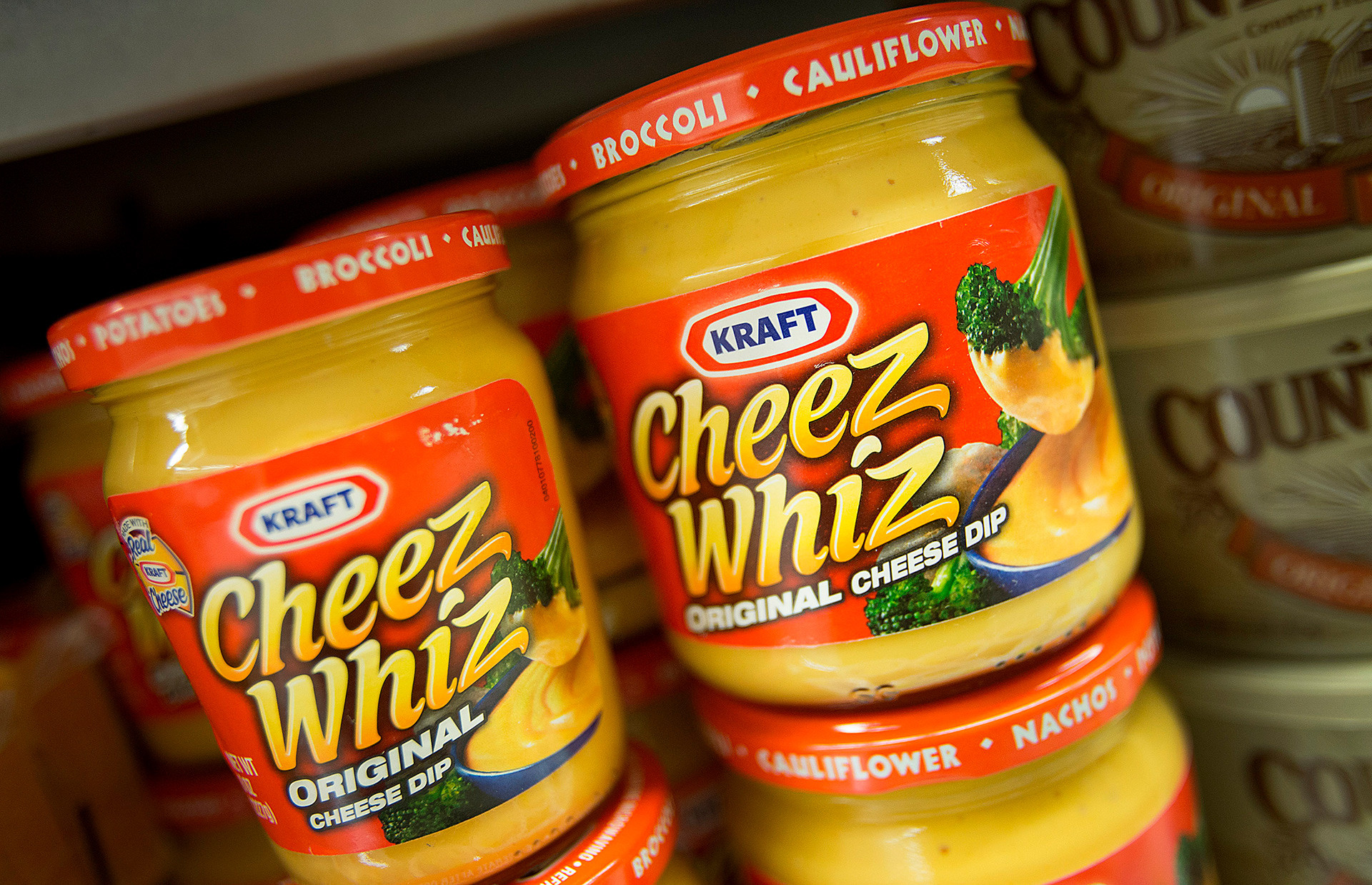
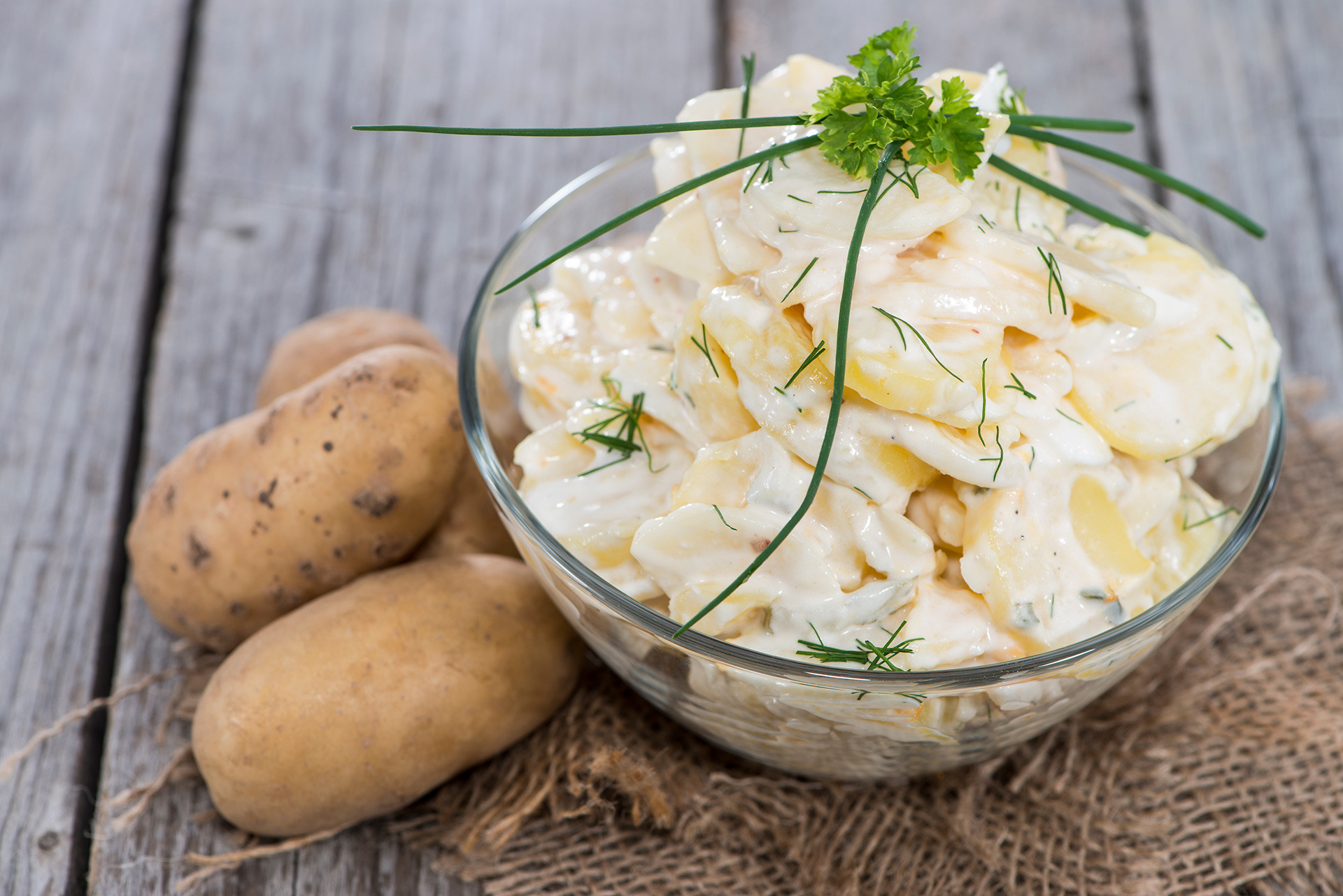
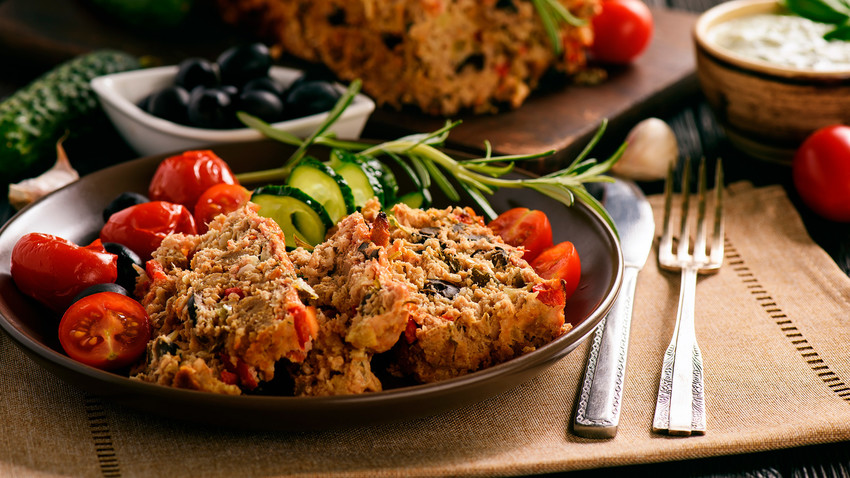

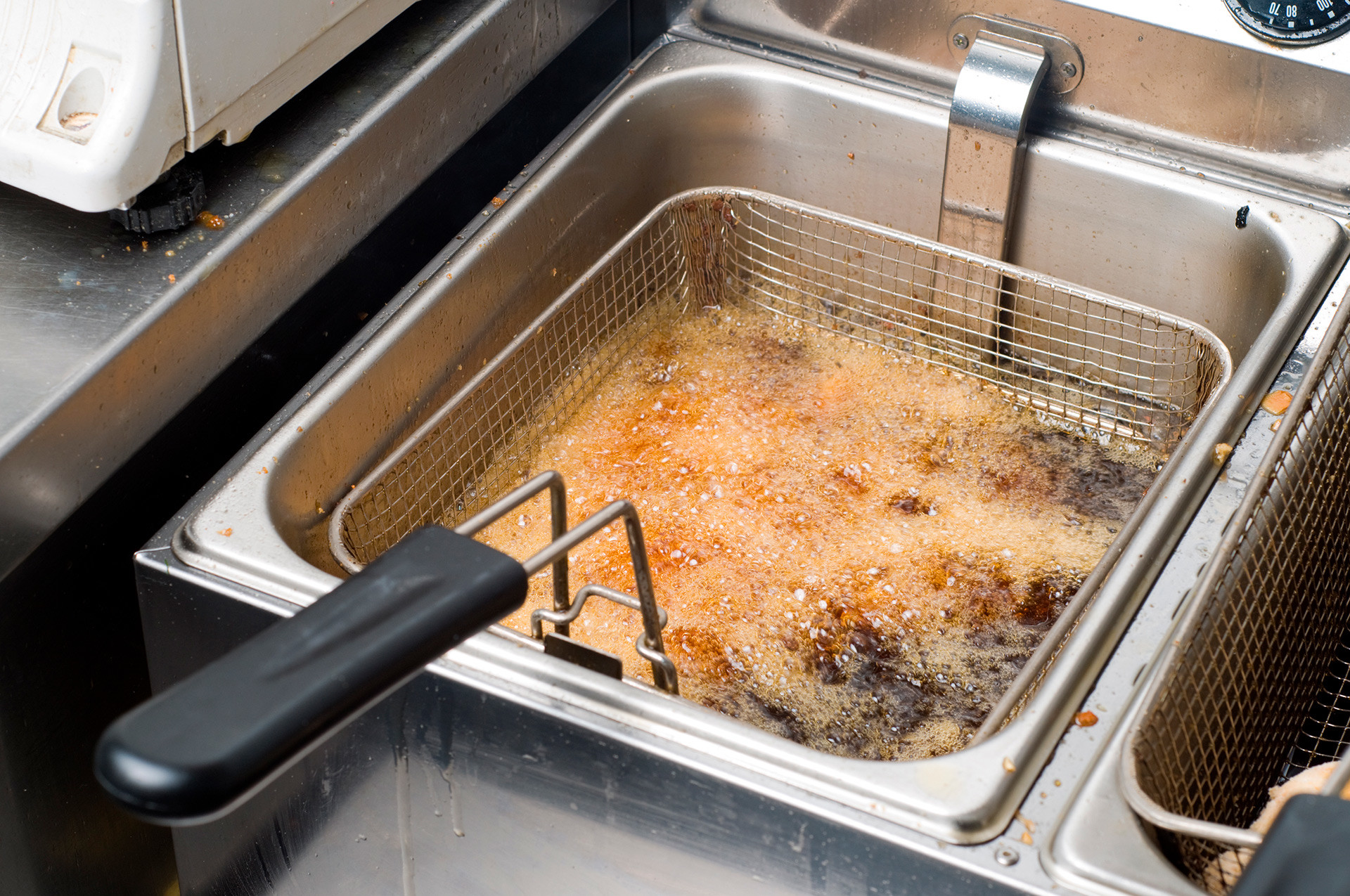
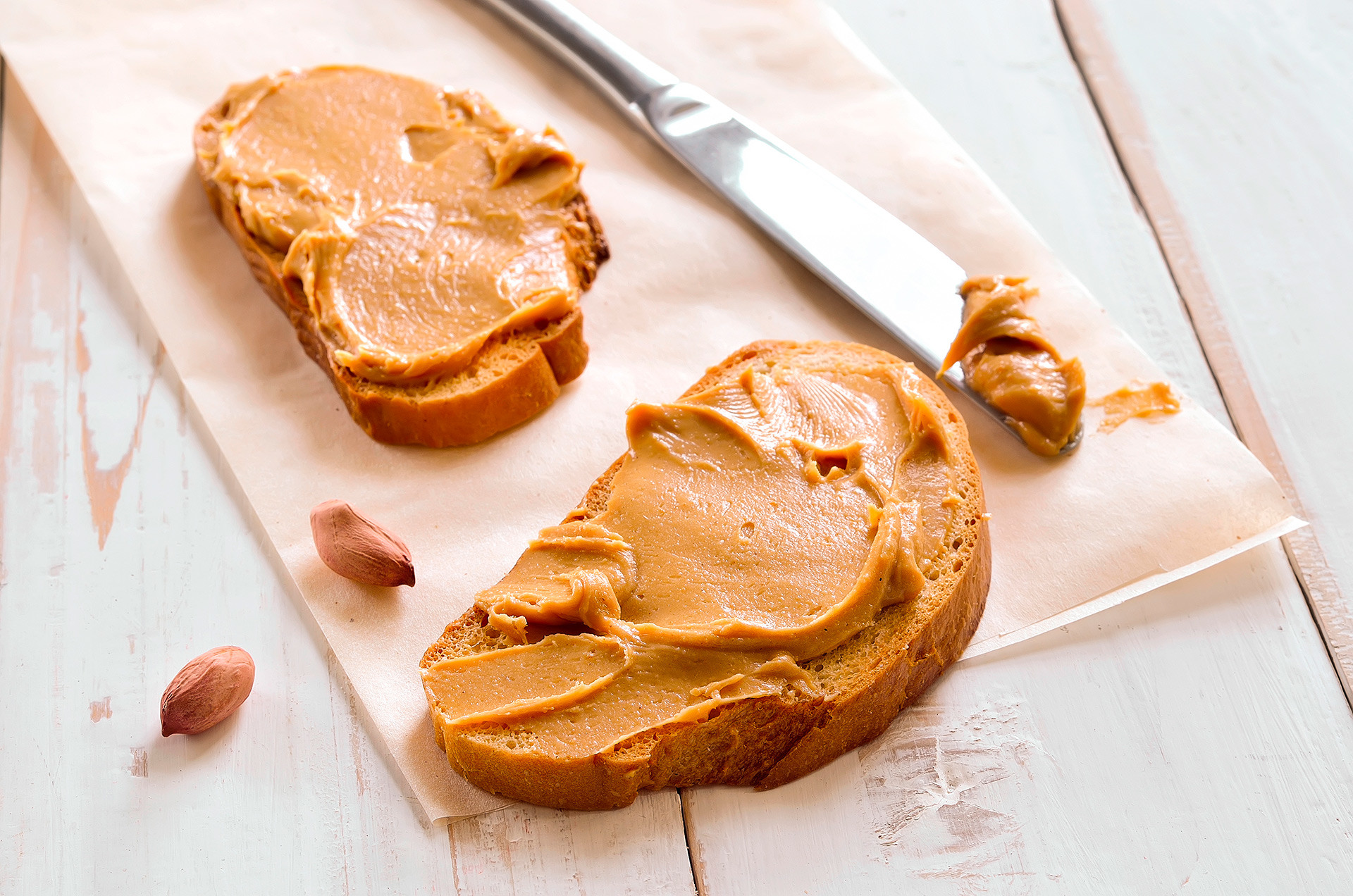
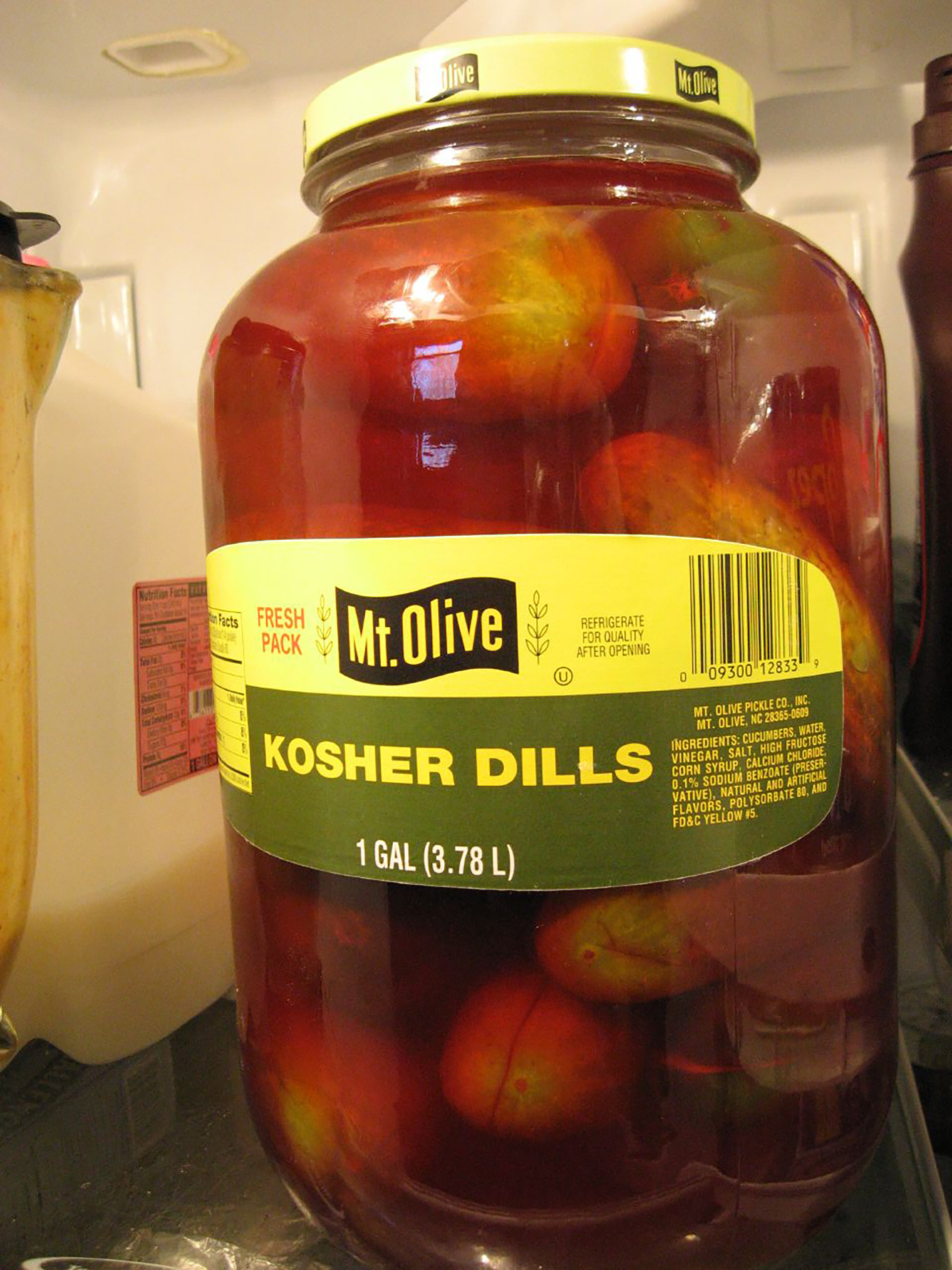
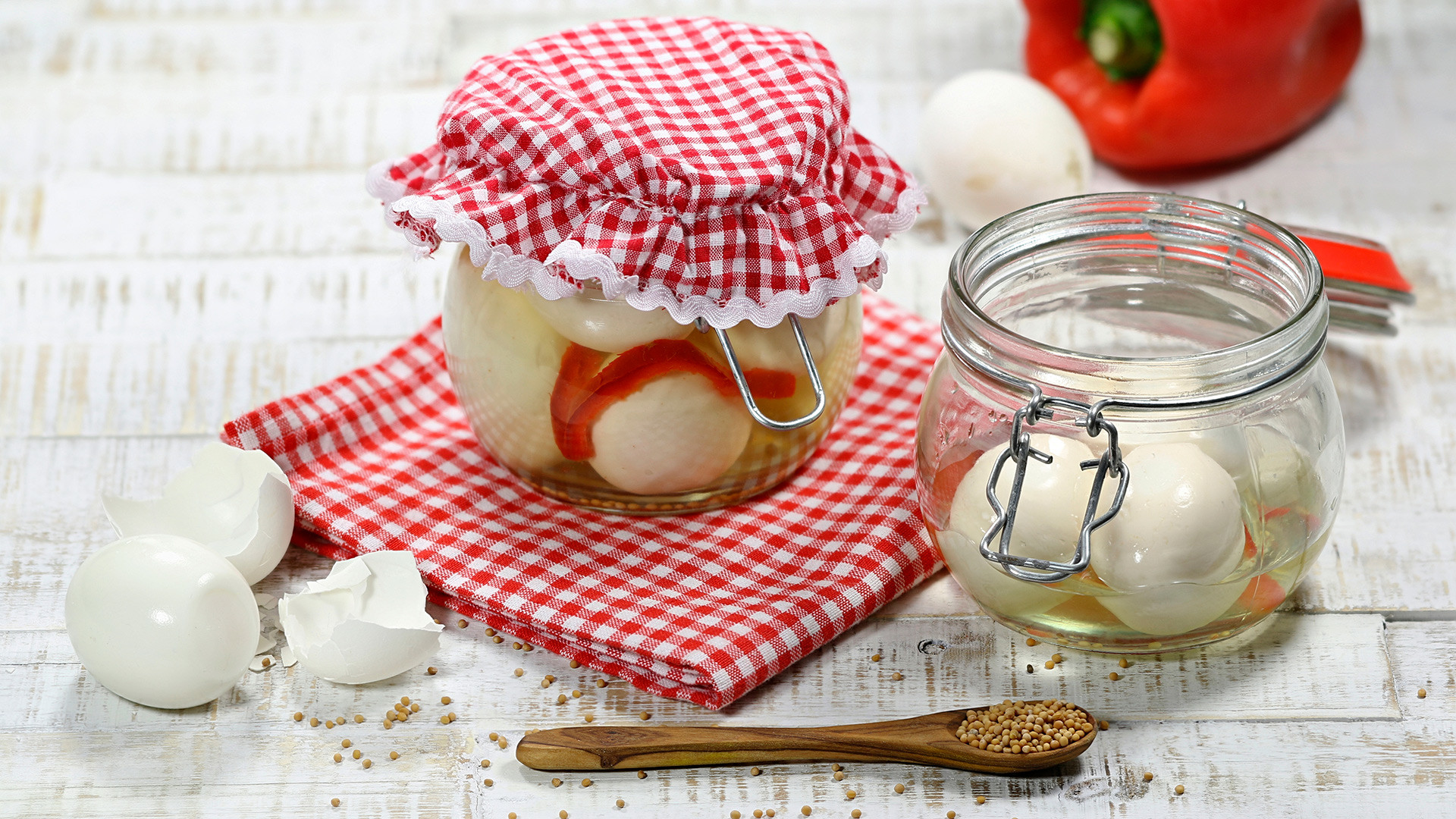
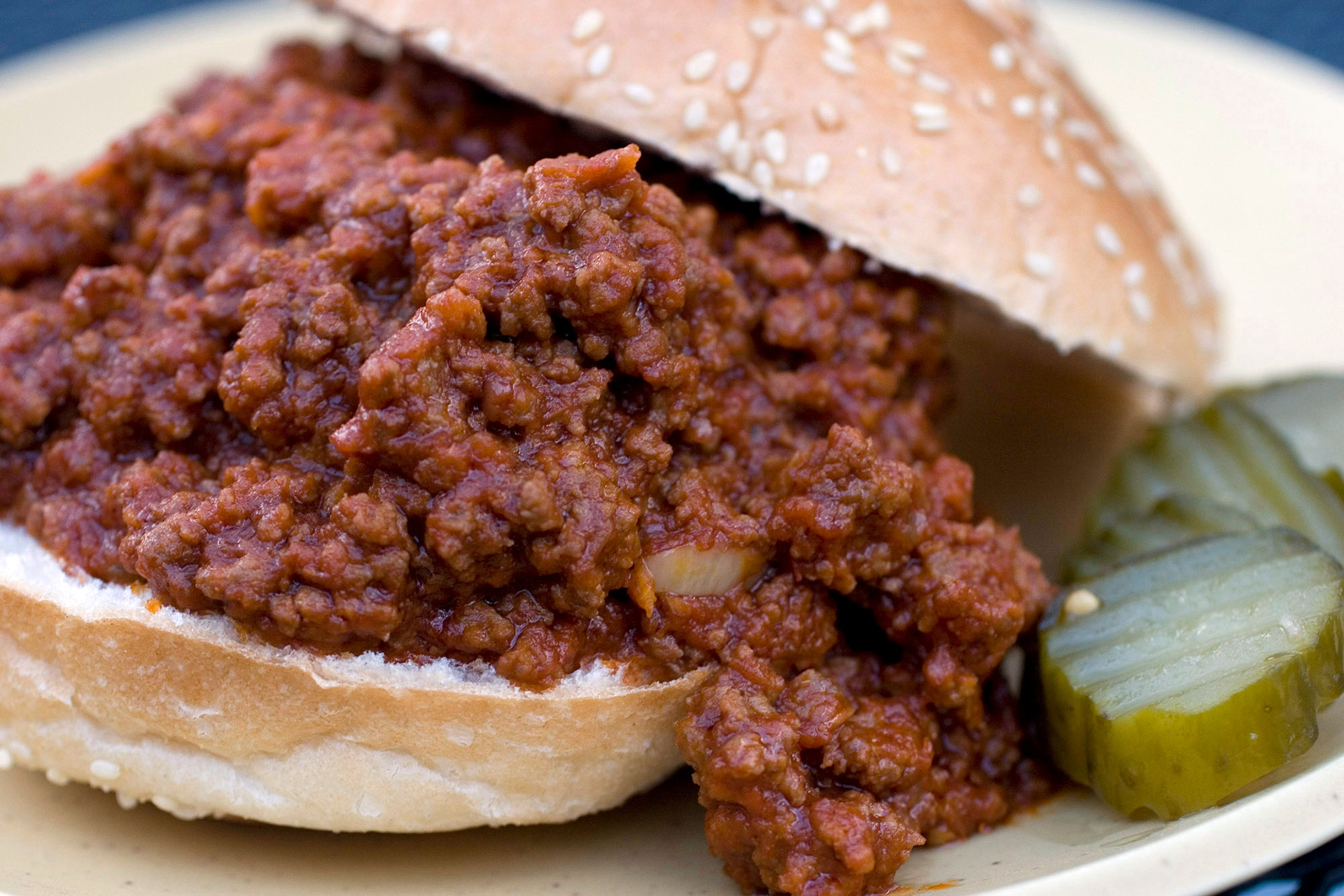
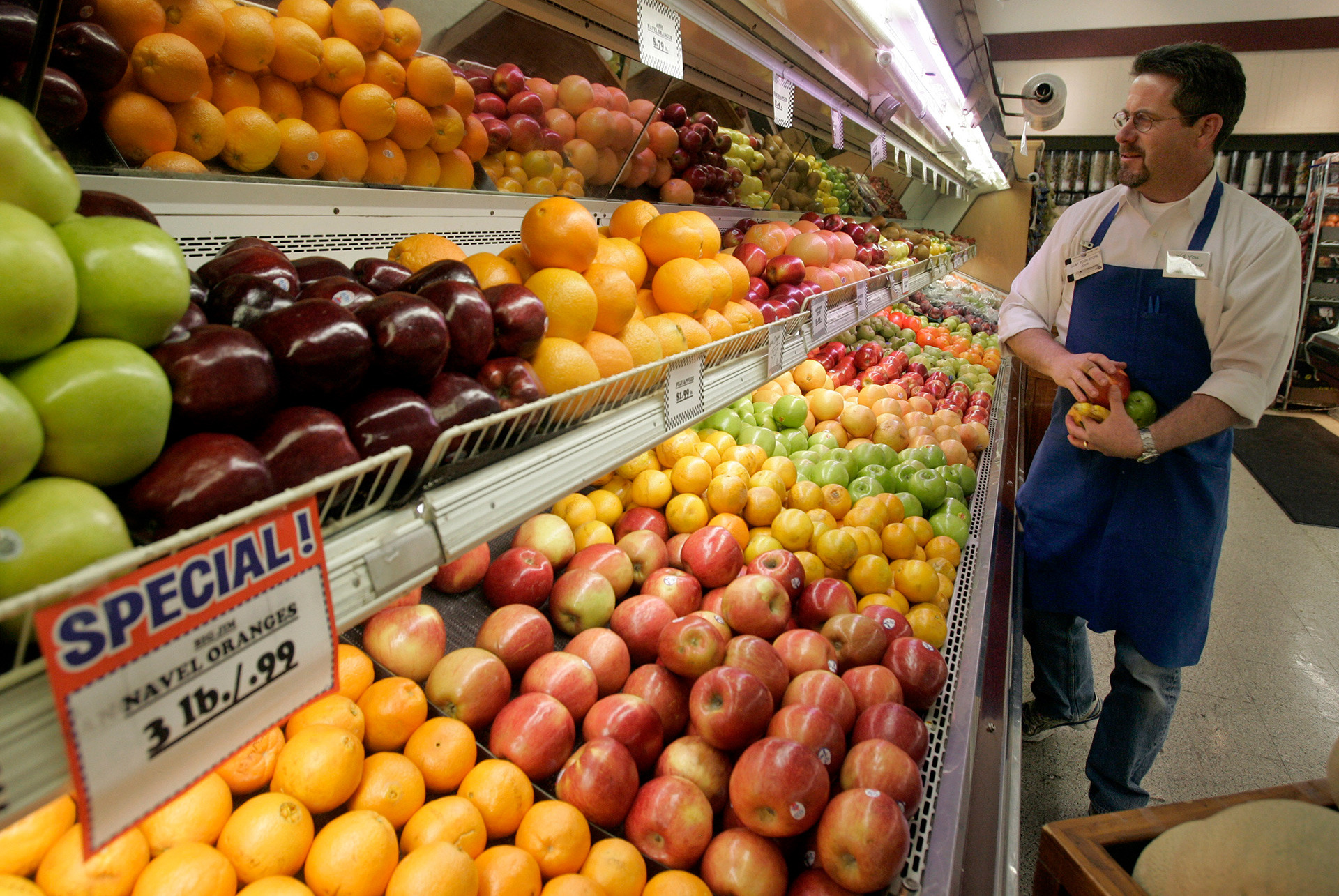















![Resources Encyclopedia of American Food and Drink , John F. Mariani [Lebhar-Friedman:New York] 1999 Oxford Encyclopedia of Food and Drink in America , Andrew F. Smith, Volume 1](https://fsd.multiurok.ru/html/2017/09/05/s_59ae91cc24b35/img15.jpg)




